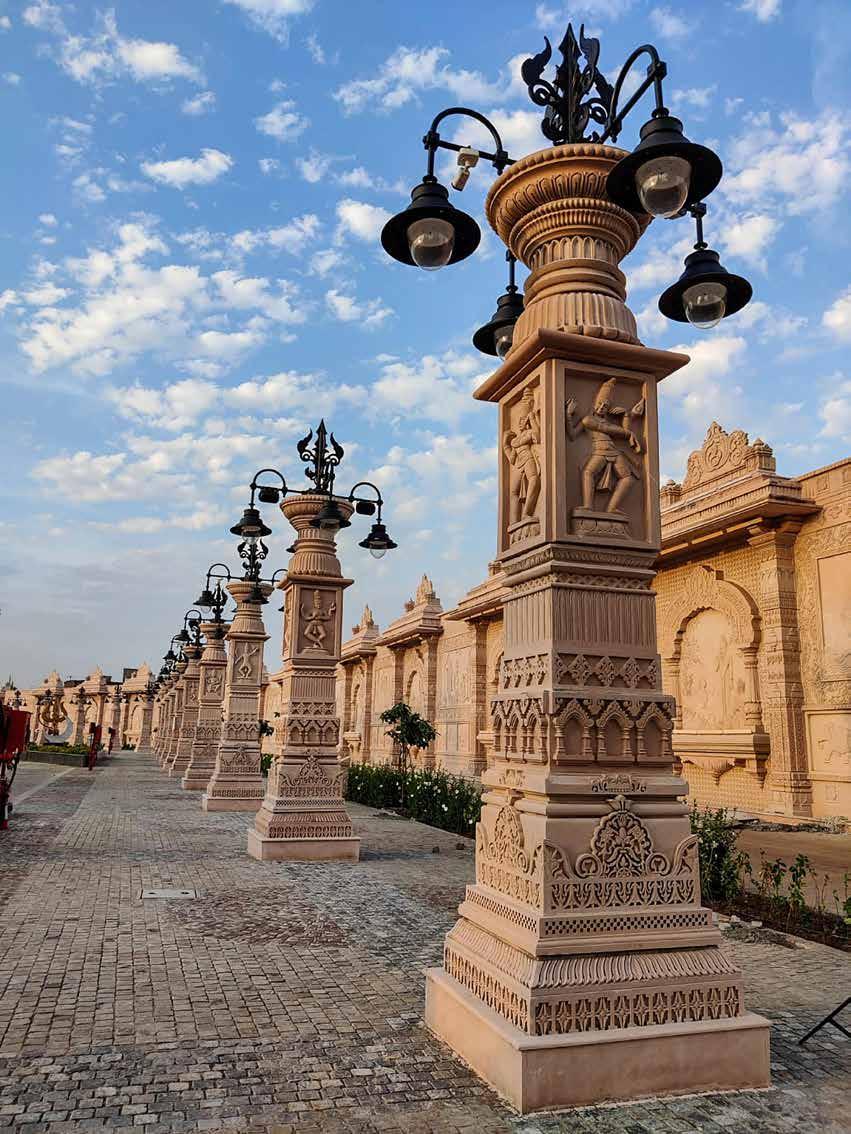

A TO Z INDIA English & Tamil Monthly Magazine Volume 06 • Issue 04 November 2022 I n d i a n C u l t u r e I n d i a n A r t I n d i a n L i f e s t y l e I n d i a n R e l i g i o n Price Rs 65/05 Mahakal Lok corridor Ujjain, Madhya Pradesh
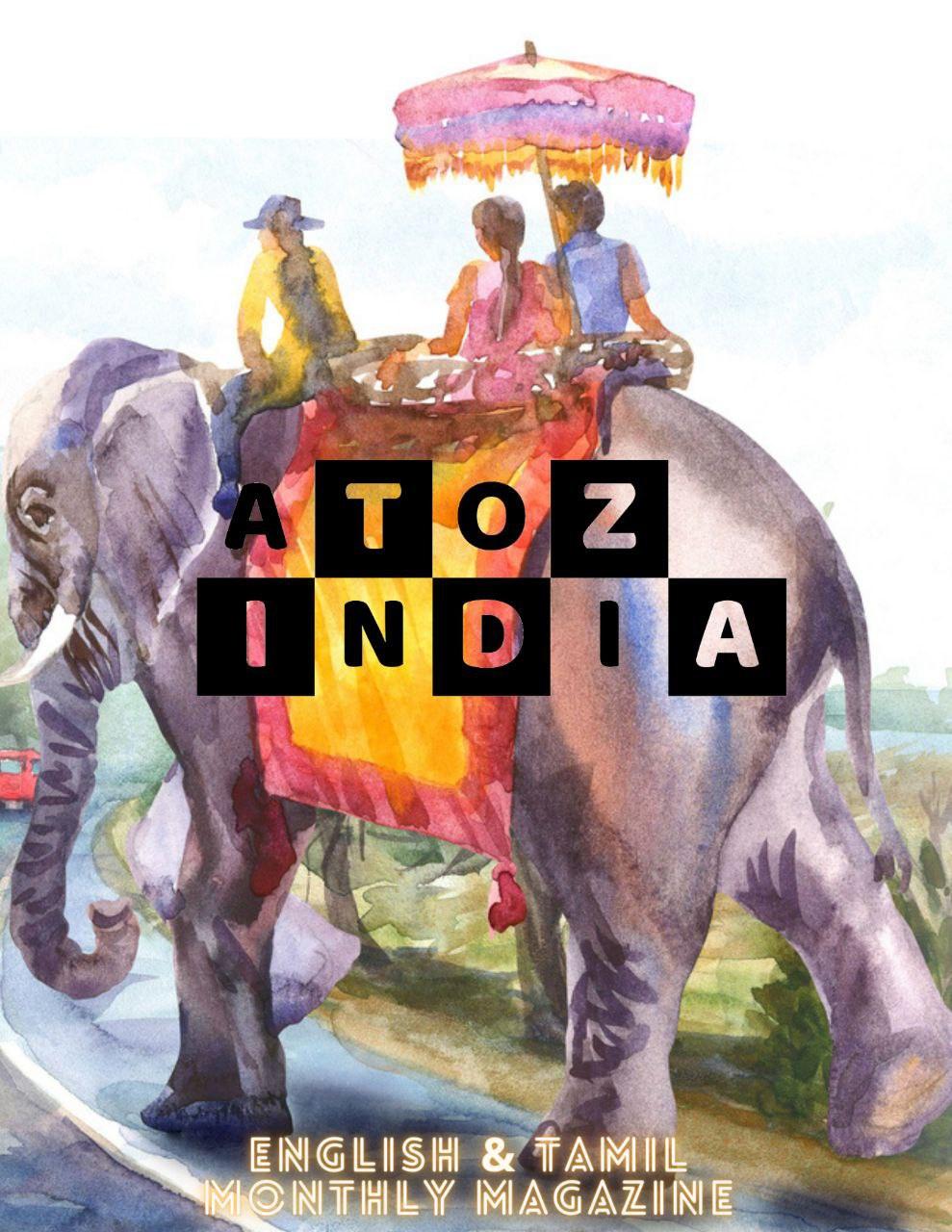
A TO Z INDIA NOVEMBER 2022 PAGE 2 Submit your artwork, articles & essays to the e.mail id: editor.indira@gmail.com
DESK: GURU NANAK JAYANTI (553TH BIRTH
05
UJJAIN, MADHYA PRADESH: MAHAKAL LOK CORRIDOR
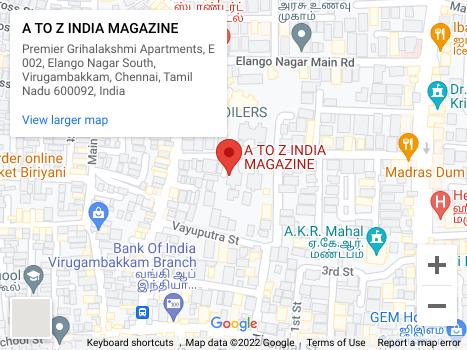

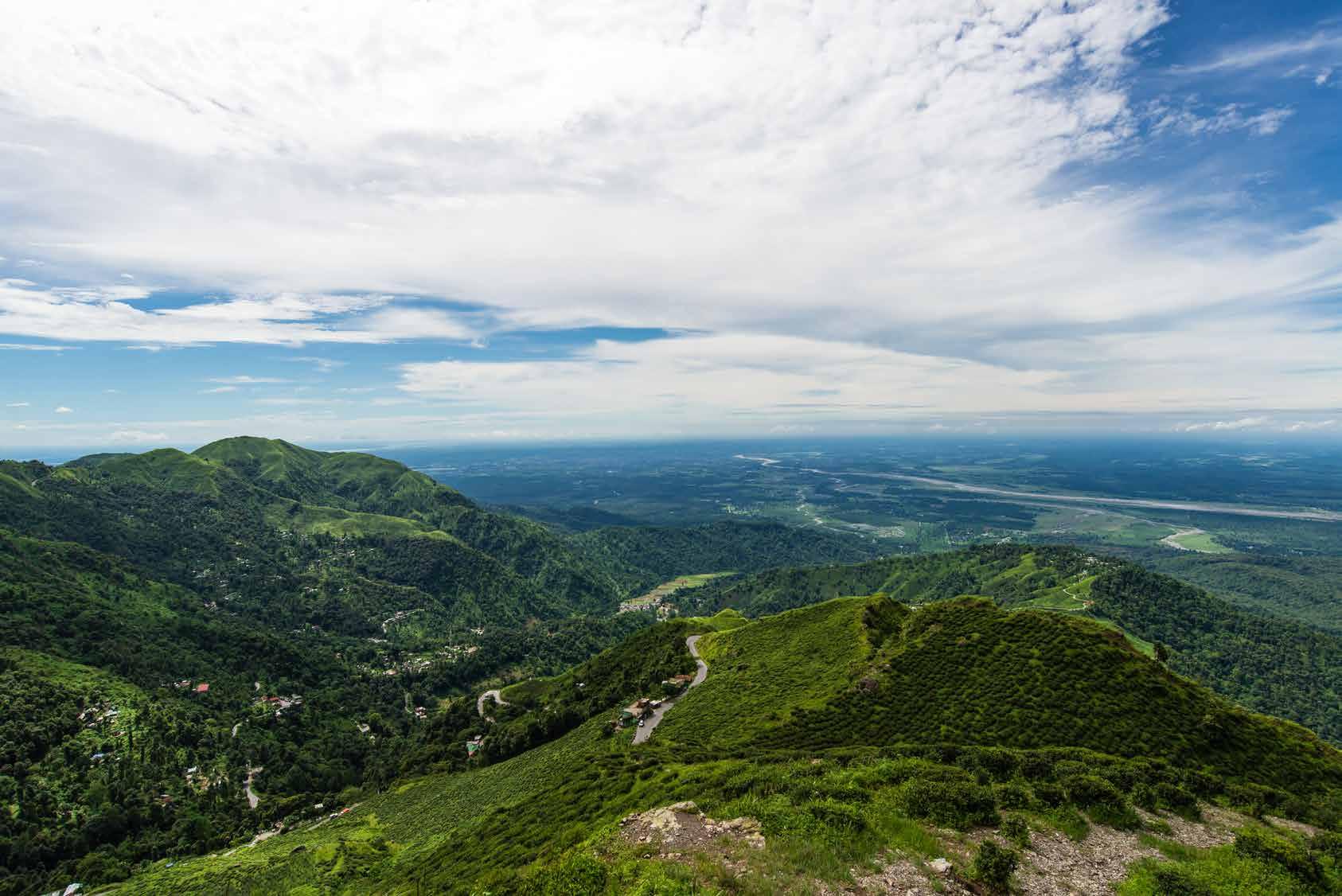
A TO Z INDIA magazine covers the Indian through his art, culture, lifestyle, religion, etc. This magazine gives an insight into the life of Indians from an angle uncovered by others. Turn to find out what it is about and to immerse yourself into an entirely different culture. Publication Team: EDITOR: Indira Srivatsa ASSOCIATE EDITOR: Dwarak, Srivatsa EDITORIAL CONSULTANTS: Santha, Bhavani, Srinivasan REPORTING: Raghavan PHOTOGRAPHY: Adithyan GRAPHICS ENGINEER: Chandra Editorial Office: E002, Premier Grihalakshmi Apartments, Elango Nagar South, Virugambakkam, Chennai 600092, Tamil Nadu, India. Communication Details: MOBILE: +91 7550160116 e.mail id: editor.indira@gmail.com Disclaimer: A TO Z INDIA Magazine has made a constant care to make sure that content is accurate on the date of publication. The views expressed in the articles reflect the author(s) opinions. 04 FROM THE EDITOR'S
ANNIVERSARY OF GURU NANAK) Guru Nanak (1469 1539 C.E.) was the founder of the religion of Sikhism and the first of the Sikh Gurus. His birth is celebrated worldwide on the day of Kartik Purnima as per Hindu lunar calendar. Guru Nanak, Gurpurab or Guru Nanak Jayanti celebrates the birth of the first Sikh Guru, Guru Nanak, who laid the foundation of Sikhism.
Prime Minister Narendra Modi inaugurated the first phase of the ‘Shri Mahakal Lok’ corridor in Madhya Pradesh’s Ujjain on Tuesday evening (October 11). A TO Z INDIA: Editorial Address inside FROM THE EDITOR A TO Z INDIA NOVEMBER 2022 PAGE 3
From the Editor's Desk: Guru Nanak Jayanti (553th Birth Anniversary of Guru Nanak)
This editorial talks about the Significance of the sacred day of Gurpurab: Guru Nanak Jayanti


Guru Nanak (1469 1539 C.E.) was the founder of the religion of Sikhism and the first of the Sikh Gurus. His birth is celebrated worldwide on the day of Kartik Purnima as per Hindu lunar calendar. Guru Nanak, Gurpurab or Guru Nanak Jayanti celebrates the birth of the first Sikh Guru, Guru Nanak, who laid the foundation of Sikhism.
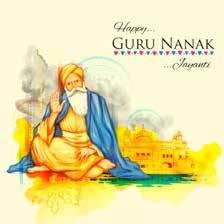
It is one of the most important festivals for Sikhs and is celebrated all over the world. This year Gurpurab will take place on November 8. Celebrations go on for three days and devotees visit Gurdwaras, seeking the blessings of Guru Nanak, eat langar and decorate their homes with diyas and lights. The festival serves as a reminder to devotees to follow the teachings and serve people.
Guru Nanak’s birth is celebrated on the day of Kartik Purnima as per Hindu lunar calendar. The tithi begins at 04:15 pm on November 07 and ends at 04:31 pm on November 08, 2022. Celebrations start at Amrit Vela or between 3 am to 6am, when devotees recite hymns followed by kirtan or recital of scriptures. Akhand Path or a 48 hour non stop reading of the Guru Granth Sahib at gurudwaras is held two days prior to the festival. Devotees carry a palanquin of the holy book and sing prayers. Special langars are organised which are open to devotees from all faiths. It features the signature Kada Prasad made using flour, ghee and sugar.
Waheguru ji! (Guru Nanak Jayanti on Tuesday, November 8, 2022 553th Birth Anniversary of Guru Nanak)
Srivatsa
Editor | A TO Z INDIA editor.indira@gmail.com +91 7550160116 Indira
A TO Z INDIA NOVEMBER 2022 PAGE 4
Ujjain, Madhya Pradesh:
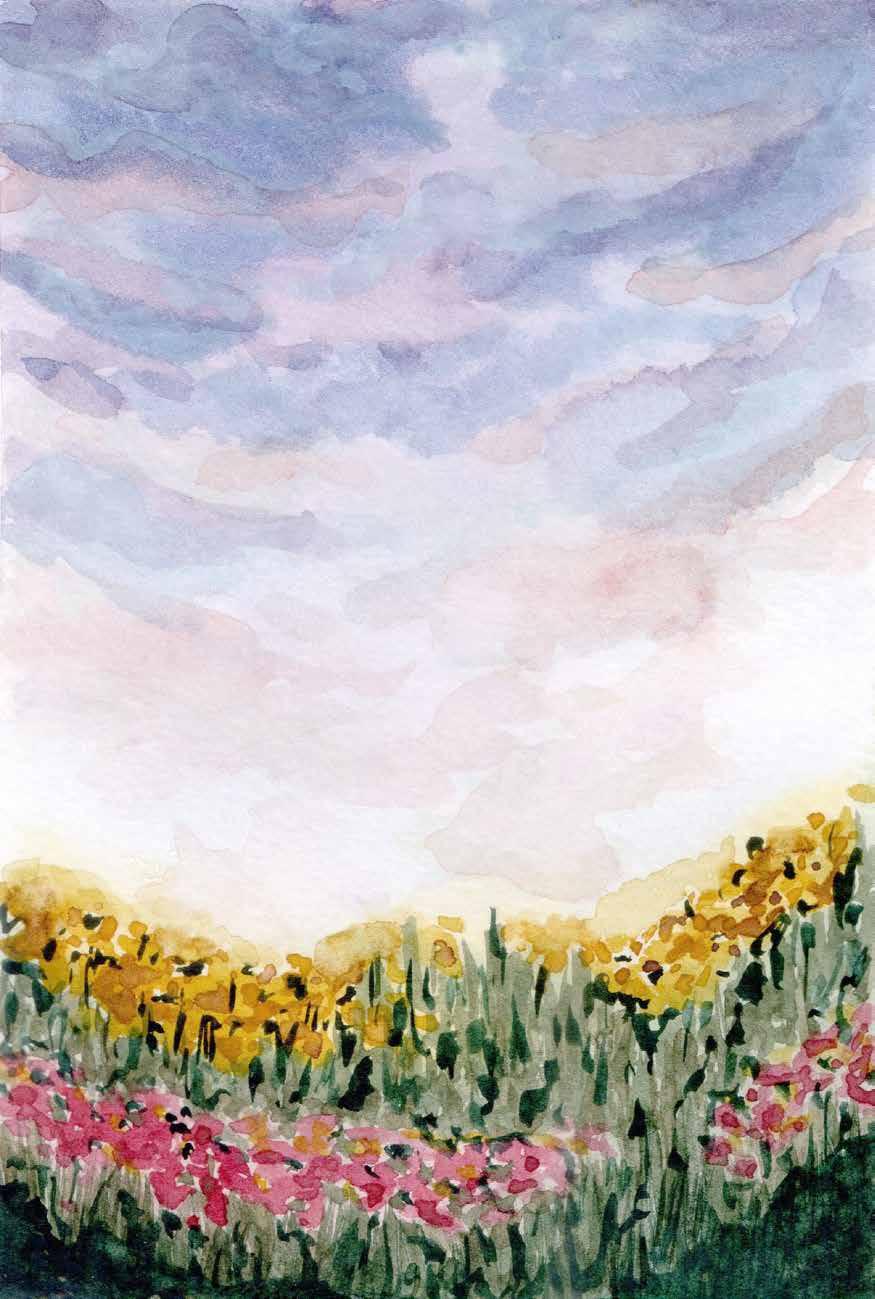
Vijay Mahakal Lok corridor
Prime Minister Narendra Modi inaugurated the first phase of the ‘Shri Mahakal Lok’ corridor in Madhya Pradesh’s Ujjain on Tuesday evening (October 11).


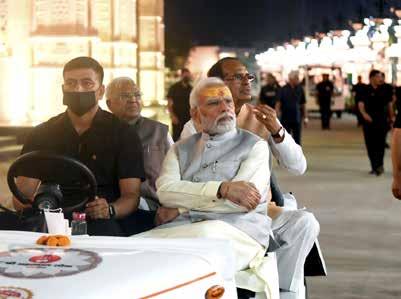
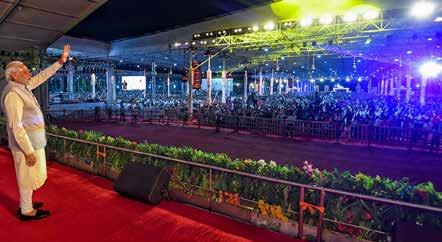
After Vishwanath temple in Varanasi and the Kedarnath shrine in Uttarakhand, Mahakal temple is the third ‘jyotirlinga’ site to see a major upliftment exercise. The Rs 800-crore Mahakal corridor is four times the size of the Kashi Vishwanath corridor, which the PM had inaugurated late last year.
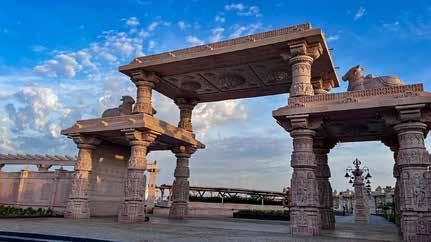
Why does the Mahakal temple in Ujjain hold a high significance in Hinduism? Here I explain. Puranas say that Lord Shiva pierced the world as an endless pillar of light, called the jyotirlinga. There are 12 jyotirlinga sites in India, considered a manifestation of Shiva. Besides Mahakal, these include Somnath and Nageshwar in Gujarat, Mallikarjuna in Andhra Pradesh, Omkareshwar in Madhya Pradesh, Kedar nath in Uttarakhand, Bhimashankar, Triyambakeshwar and Grishneshwar in Maharashtra, Viswanath at Varanasi, Baidyanath in Jharkhand, and Rameshwar in Tamil Nadu.
Mahakal is the only jyotirlinga facing the south, while all the other jyotirlingas face east. This is because the
A TO Z INDIA NOVEMBER 2022 PAGE 5
Mahakal Lok corridor
Vijay

direction of death is believed to be the south. In fact, people worship Mahakaleshwar to prevent an untimely death.
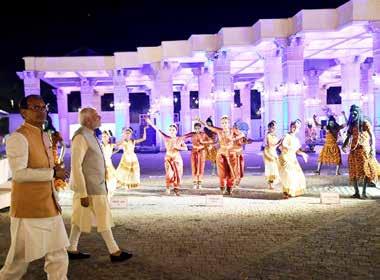
A local legend says that there once was a king called Chandrasena who ruled Ujjain and was a Shiva devotee. The Lord appeared in his Mahakal form and destroyed his enemies. Upon the request of his devotees, Shiva agreed to reside in the city and become its chief deity.
The Mahakal temple finds a mention in several ancient Indian poetic texts. In the early part of the Meghadutam (Purva Megha) composed in the 4th century, Kalidasa gives a description of the Mahakal temple. It is described as one with a stone foundation, with the ceiling on wooden pillars. There would be no shikharas or spires on the temples prior to the Gupta period. The city of Ujjain was also one of the primary centres of learning for Hindu scriptures, called Avantika in the 6th and 7th centuries BC. Later, astronomers and mathematicians such as Brahmagupta and Bhaskaracharya made Ujjain their home.
Also, as per the Surya Siddhanta, one of the earliest available texts on Indian astronomy dating back to the 4th century, Ujjain is geographically situated at a spot where the zero meridian of longitude and the Tropic of Cancer intersect. In keeping with this theory, many of Ujjain temples are in some way connected to time

A TO Z INDIA NOVEMBER 2022 PAGE 6
Ujjain, Madhya Pradesh:
Ujjain,
Mahakal Lok
Vijay

and space, and the main Shiva temple is dedicated to Mahakal, the lord of time. In the 18th century, an observatory was built here by Maharaja Jai Singh II, known as the Vedh Shala or Jantar Mantar, comprising 13 architectural instruments to measure astronomical phenomena.
It is said that during the medieval period, Islamic rulers gave donations to priests for offering prayers here. In the 13th century, the temple complex was destroyed by Turk ruler Shams-ud-din Iltutmish during his raid on Ujjain. The present five-storeyed structure was built by the Maratha general Ranoji Shinde in 1734, in the Bhumija, Chalukya and Maratha styles of architecture. A century later, its marble walkways were restored by the Scindias.
PM Modi in Ujjain:
'Mahakal Lok' corridor was inaugurated by PM Modi. This corridor is 900-metre-long, one of the largest such corridors in the country. Corridor spreads around the old Rudrasagar Lake which has also been revived as part of project. Mahakaleshwar temple is one of the 12 'jyotirlingas' in the country. Two majestic gateways Nandi Dwar and Pinaki Dwar separated by a short distance have been erected.
Prime Minister Narendra Modi dedicated to the nation the first phase of the 'Shri Mahakal Lok' corridor in Ujjain on Tuesday evening (October 11). It was a mega event, in which PM Modi inaugurated the first phase of Mahakal temple corridor project in Ujjain, Madhya Pradesh.
"Prime Minister Modiji dedicated to the nation the first phase of Mahakal Lok. It was a memorable moment for all of us. The entire state was waiting for that moment and we all participated in the event in some way or the other," Madhya Pradesh Home Minister Narottam Mishra said on Monday. Chief Minister Shivraj Singh Chouhan on Sunday took a round of the Mahakal Lok and reviewed preparations for the event. After visiting the Mahakaleshwar Temple and Mahakal Lok, the mystic and amazing premises should make a permanent place in the hearts of the people, Chouhan said.
Why is so much buzz over 'Mahakal Lok' corridor: The Mahakal Lok corridor is more than 900 metre long. It is one of the largest such corridors in the country. The corridor spreads around the old Rudrasagar Lake which has also been revived as part of the redevelopment project around the famous Mahakaleshwar Temple, one of the 12 'jyotirlingas' in the country which attracts a large number of devotees. Two majestic gateways Nandi Dwar and Pinaki Dwar separated by a short distance have been erected. The gateways have been erected near the starting point of the corridor. It winds its way to the temple's entrance and offers an aesthetic view along the way. A colonnade of 108 ornate pillars made of intricately carved sandstones, gushing fountains and a running panel of more than 50 murals have also been erected. The murals depict the stories from the 'Shiv Puran' are among the major highlights of the Mahakal Lok. The grand event is part of the Rs 856 crore Mahakaleshwar Temple corridor development project. The first phase of 'Mahakal Lok' has been developed at Rs 316 crore.
A TO Z INDIA NOVEMBER 2022 PAGE 7
corridor
Madhya Pradesh:
Nandi A symbolism of eternal waiting
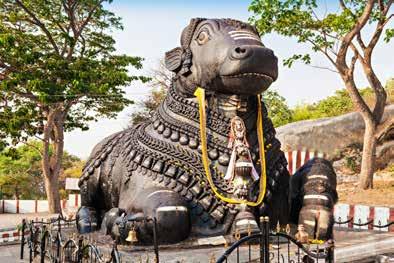



Bhavani
Nandi is a symbolism of eternal waiting, because waiting is considered the greatest virtue in Indian culture. One who knows how to simply sit and wait is naturally meditative. He is not expecting Shiva to come out tomorrow. He will wait forever. That quality is the essence of receptivity. Nandi is Shiva’s closest accomplice because he is the essence of receptivity. Before you go into a temple, you must have the quality of Nandi – to simply sit. You are not trying to go to heaven, you are not trying to get this or that – you go inside and simply sit. So, just by sitting here, he is telling you, “When you go in, don’t do your fanciful things. Don’t ask for this or that. Just go and sit like me.”
People have always misunderstood meditation as some kind of activity. No, it is a quality. That is a fundame ntal difference. Prayer means you are trying to talk to God. You are trying to tell him your vows, your expectations, or whatever else. Meditation means you are willing to just listen to existence, to the ultimate nature of creation. You have nothing to say, you simply listen. That is the quality of Nandi – he just sits, alert. This is very important: he is alert. He is not sleepy or sitting in a pass ive way. He is sitting very active, full of alertness and life, but no expectation or anticipation. That is meditation. Just waiting, not for anything in particular.
If you just wait without doing your own thing, the existence will do its thing. Meditation essentially means the individual person is not doing his own thing. He is just there. Once you are simply there, you become aware of the larger dimension of the existence, which is always in action. You become aware that you are a part of it. Even now, you are a part of it. But becoming aware that “I am a part of it” is meditativeness. Nandi is the symbolism of that. He reminds everyone, “You must sit like me.”
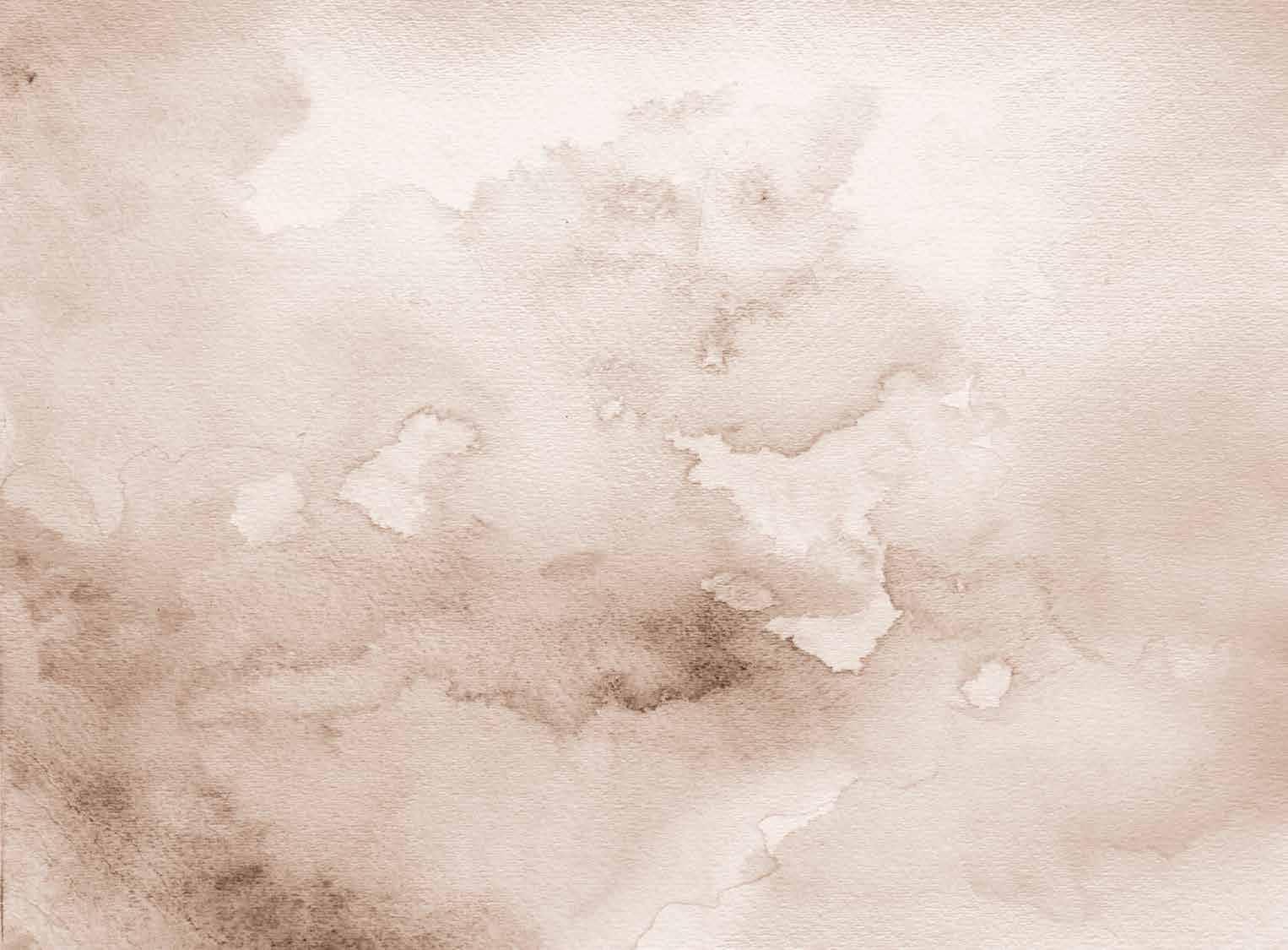
A TO Z INDIA NOVEMBER 2022 PAGE 8
Cultural India:
Bhojpur, Raisen District of Madhya Pradesh:
Bhojeshwar Temple Dedicated to Lord Shiva
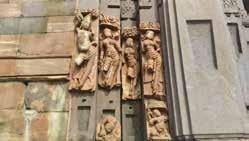
Bhavani
Bhojeshwar Temple dedicated to Shiva was built during the reign of Parmara ruler Bhoja in the village of Bhojpur, Raisen District of Madhya Pradesh in 11th Century CE. It however remained incomplete. It has one of the largest Shiva lingam in India.
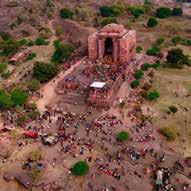


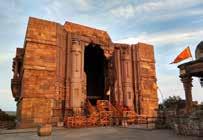
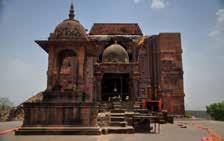
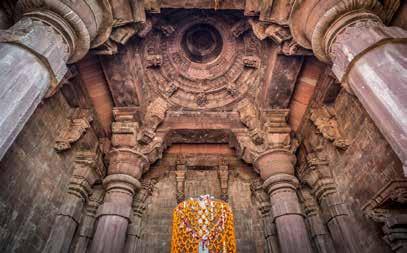

As per legends, the original temple in this place dates back to the Mahabharata era. Raja Bhoja rebuilt and expanded it. Bhoja was a great patron of art, architecture and literature. He is also credited with foundation of the city of Bhojpal now called Bhopal, the present capital of Madhya Pradesh.
The massive Bhojeshwar Shiva temple was commissioned on the banks of a man made lake with a massive Shiva lingam measuring 7.5 feet (2.3 m) in height and 17.8 feet (5.4 m) in circumference. It is set on a square platform, whose sides measure 21.5 feet (6.6 m). The total height of the lingam, including the platform is over 40 feet (12 m)! This makes it the tallest in the country.
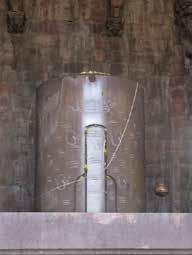
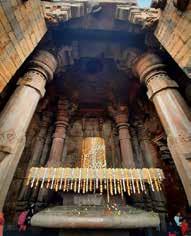
It appears that the construction work stopped abruptly. The reasons are not known, but historians speculate that the abandonment may have been triggered by a sudden natural disaster, a lack of resources, or a war. Because the temple was never completed, it lacks a dedicatory inscription.

A TO Z INDIA NOVEMBER 2022 PAGE 9
Our country India:
Diverse Cultural Heritage of India
Salil Saroj
 By Salil S New D
By Salil S New D
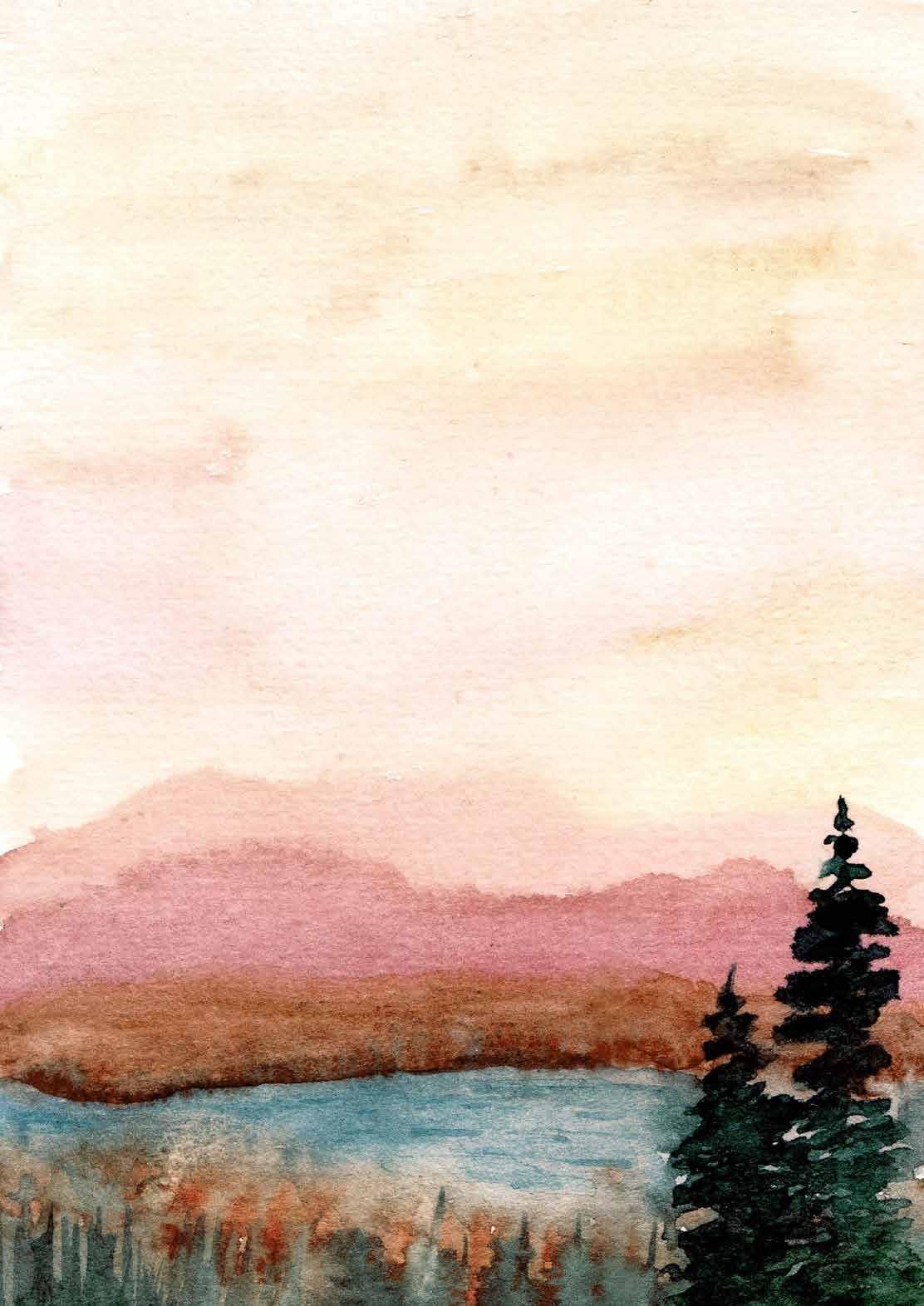
Email: salilmumtaz@gmail.
The Indian tradition of music, dance and drama are at the very core of our civilization. The essence and quality of any civilization is gauged by the cultural and artistic interests of its people. The Indian civilization with its glorious cultural heritage and rich tradition in the fine arts is universally recognized. We, as the inheritors of this tradition, must not only take pride in it but also do all we can to preserve and pass on the same to the younger generations.
Our country has a rich and diverse cultural heritage, indicative of the inner strength and resilience of our civilization. There is hardly a region or valley or mountain or a sea coast or a plain in India which does not vibrate with the sound of our characteristic folk dances and music. The themes of these dances are simple and rooted in the lives of our common people.
Our classical dances, on the other hand, had a very close linkage to religion and faith. They have evolved through many centuries and have given continuity to the Indian cultural tradition that has shown vibrancy in constantly adapting itself to new conditions and assimilating new influences. However, we have always felt the need to bring our classical art forms c loser to the people so that they have a better appreciation of the cultural heritage of our county.
Music, it is said, is nourishment for the soul. It is one of the most civilizing influences on man. It brings forth the divinity in man and is indeed a path to God. Music also has a unifying influence as it knows no boundaries. Every emotion of man finds expression in music whether it is joy, grief or valor. However, there is a practical side to music too. And in this context I am reminded of what our late President, Dr. Sarvepalli Radhakrishnan once said:
"The true purpose of music is not only to give pleasure to the senses, or instruction to the mind, but to convert your whole being and lift it above sorrow, above enchantments and disenchantments of this world. In the world of music, you build a shrine of beauty and when you once worship that, you come back to the better inspired for doing practical work. That is the true purpose of music."
Indian music is quite rich and varied and has had an unbroken history of growth and development. Our music has been subject to various internal and external influences and has, as a result, undergone many changes through the ages. In ancient India, music was inextricably interwoven with the devotional and ritualistic side of life and had, therefore, close association with the temple. It was mainly on account of its devotional and emotional appeal that the common people valued music. The music of our saints and sages has also helped us preserve the equilibrium in society and righteousness in the individual. Music has also been the greatest vehicle of Bhakti and sages and saints have reached divinity through music.
A society which ennobles fine arts cannot be base or vulgar. It is only by encouraging fine arts that we can enrich the life of fact; nothing narrow or selfish can co-exist with a true exponent of the arts. There is no doubt that life will become soulless and devoid of all beauty, charm and grace, if it is divorced from the appreci ation and enjoyment of fine arts. Art should not merely entertain, but inform, educate and motivate the people. It is the duty of artists to bring the people together and fill their lives with higher social aims.
A TO Z INDIA NOVEMBER 2022 PAGE 10
Our country India: By Salil Saroj New Delhi

Diverse Cultural Heritage of India

Salil Saroj
Email: salilmumtaz@gmail.com
Indian art and culture has flourished and flowered, not only because of its richness and variety, but also because of its interaction with other cultures. There has been a synthesis between various cultures, between the local and the universal and between the past and the present.
It is only when we recognize the wholeness of our existence and life around us that we are able to arrive at a correct picture. We cannot and must not categorize human beings or life into various segments, whether it is economic or cultural, material or spiritual, functional or aesthetic, intellectual or emotional. It is only the whole package together that makes a human being. India is what she is today, because fine arts were kept alive here as a part of the very life of our people. We have to so use the legacy of our past as to be of help in carving out a great future for India.

A TO Z INDIA NOVEMBER 2022 PAGE 11
Mandya, Karnataka:
Nambi Narayana temple
Padmanabhan
This temple is located in Mandya. It is 1000 years old and the lord is seen in a handsome tall standing posture. This is one of the Pancha Narayana temples and is now referred to as Thonnur. The temple was renovated by Ramanuja during his exile from Srirangam. The idol and the sanctum are over 5500 years old and dates back to the Dwapara Yuga. Ramanuja built new mandapas outside the sanctum and renovated and consecrated the temple.
About the Temple:

Fearing the Chola King Kulothunga; Ramanujacharya, the saint philosopher, who propounded the Vishistadvaitha philosophy had fled Srirangam in Tamil Nadu. Due to the torment and trauma he had encountered, he decided to take refuge at Thonnur, a small village near Melkote in Pandavapura taluk of Mandya district. Many scholars give different versions about how long he stayed there, but i t seems that he had a lengthy sojourn here going by many events and legends connected with him. Bittideva, the Jain King of the Hoysala dynasty, was attracted by Ramanujacharya's teachings and became a Vaishnavite and called himself Vishnuvardhana. It is said that Thonnur became the second capital of Hoysalas during this period. The two temples here are the Nambi Narayanaswamy Temple and the Venugopalaswamy Temple. The Nambi Narayanaswamy temple got its name as Lord Narayana graced Nambi, a disciple. This temple was constructed in the 12th century AD during the regime of Vishnuvardhana to commemorate his victory over the Cholas at Talakadu. According to an inscription, Suragi Nagaiah, one of the generals of King Vishnuvardhana, built this shrine. The temple has a Navaranga, a Maharanga Mantapa, an Ardha Mantapa, a Shukanaasi, a Garbha Griha (Sanctum Sanctorum) and a big Paataalankana.
To the right of Narayanaswamy, there is an image of Lakshmi. Gadha (Mace) and Padma are found on the upper hands. Sridevi and Bhudevi flank the nine foot high main deity on the right and left sides respectively. The images of Narayanaswamy, Sridevi and Bhudevi are carved out of a single stone. In Navaranga, among other pillars, four are in soft stone. The remaining is in granite. Ornate designs of flowers and beads are carved on these pillars. According to experts, the four similar soft stone pillars were forerunners to the pillars found in Belur and Halebeedu temples. The images of Astadikpaalakaas are also found here. The Ardhamantapa has the padukaas of Ramanujacharya.
The Vimana of the shrine is in Dravidian style and built of mortar. Fifty pillars adorn the Maharanga Mantapa. The Paataalankana has 40 octagonal-faced pillars. 45 feet high Garudagamba lies in front of this shrine. Some scholars are of the opinion that the Paataalankana and the Maharangamantapa are subsequent additions.
The Venugopalaswamy Shrine, located opposite to the Nambi Narayanaswamy Temple, has a basadi like Gopuram. Mandya district has many temples built in Hoysala style. But shrines in Thonnur are special, as they are built in Chola style. It is said that many Tamilians settled here after Ramanujacharya's arrival. Probably, this factor might have influenced temple construction in a particular style.
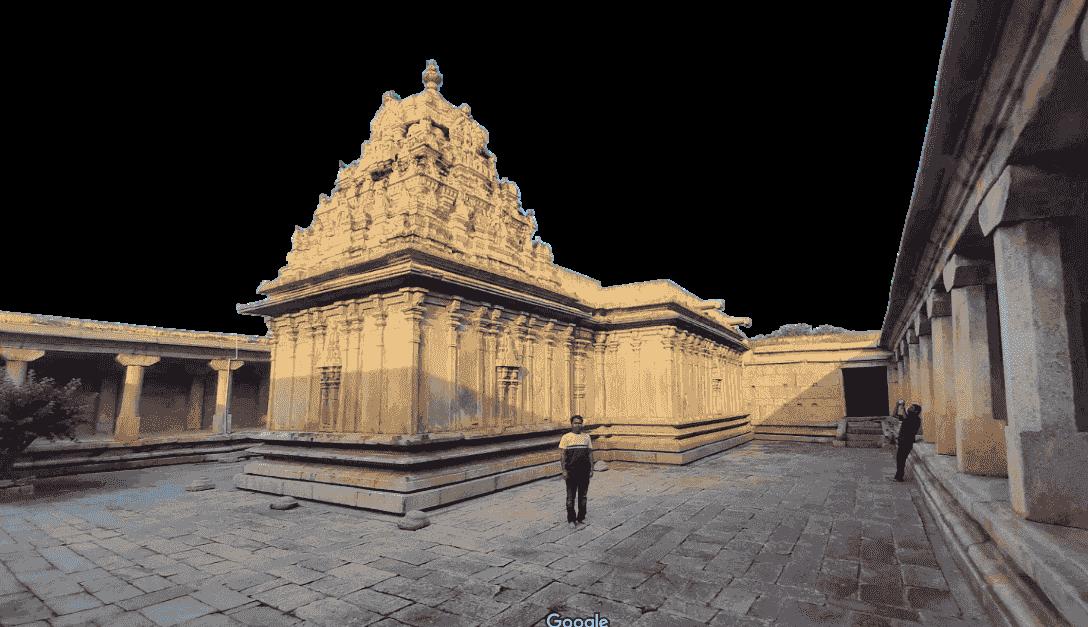
A TO Z INDIA NOVEMBER 2022 PAGE 12
Ramanujacharya:

After leaving Srirangam in Tamilnadu, Sri Ramanuja sought asylum in this place. He was received with all respects by one of his disciples Thondnur Nambi. The place was then under the rule of one Pittidevan. He was staunch Jain. When Thaondanur Nambi visited him, he found the palace and all apartments plunged in darkness. The king told Nambi that his daughter was possessed of a ghost and his Jain Gurus could not cure her. Nambi assured the king that his Guru Ramanuja will drive the ghost away by holding his daughter. The king was happy and promised that he would embrace Vaishnavism if the Guru saved the daughter. The king and the queen received him with all courtesy. The Acharya spilled the water from his kamandala on the face of the princess. She fell fainted but rose up with a clear f ace, completely free from the ghost effect. Pittidevan and his wife became Ramanuja’s disciples. Sri Ramanuja renamed the king Vishnuvardan. Following the king, many shifted to Vaishnavism. Vishnuvardan built many Vaishnava temples as desired by the Guru. Temples for Belur Thalaikat Keerthi Narayana, Kodagu Veera Narayana and Melukot Seluva Narayana are a few among them, all speaking volumes of architectural beauty. They challenged him for a debate which he accepted. He faced 12,000 Jains from behind a curtain where Sri Ramanuja took the form of 12,000 hooded Adisesha and replied every objection raised by the Jains and defeated all the 12,000 Jains.
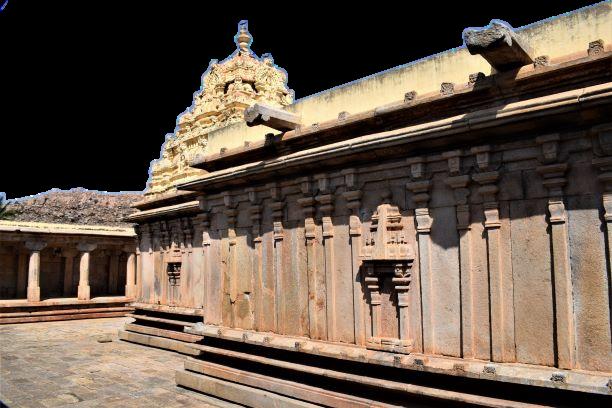 Padmanabhan
||Om Sri Nambi Narayana Namaha||
Nambi Narayana temple
Mandya, Karnataka:
Padmanabhan
||Om Sri Nambi Narayana Namaha||
Nambi Narayana temple
Mandya, Karnataka:
A TO Z INDIA NOVEMBER 2022 PAGE 13


வளளி வாழநத இடம என� சிறபபப ெப�ம இநத வளளிமைலக ேகாவில வடக� ஆறகா� மாவடடததில வாலாஜா ப�திக� அ�ேக அைமந�ளள�. இநத ேகாவிலின �லவர ெதயவமாக வளளி, ெதயவாைனயடன ��கன காடசி அளிககிறார. பராண வரலா : சமண சமயததில 23 வ� தரததஙகரராகத திகழநதவர பார�வநாதர. இவர �க�ைடயின கழ அமரநத நிைலயி�ம, நினற நிைலயி�ம சிறபஙகளாக வ�ககப பட�ளளார. �க�ைடக�க கழ ஏ� தைலகைளக ெகாணட நாகம இவ�க� அரணாகக காடடபப�கிற�. எனேவ இவைர பார�வநாதர என� ��வர. இவர� பா�காவலரகளாகவம அவரகளின சாசனா ெதயவமாகவம விளஙகியவரகள பதமாவதி இயககியமம�ம, இயககன தரேனநதிர�ம ஆவர. சிறபஙகளில பதமாவதி இயககியமமன சற� ஒயயாரமாக அமரநத நிைலயில தன� வல� காைல சற� ��ககி அமரந�ளள நிைலயில வ�ககபபட�ளள�. தன� வல� ைகைய அபய �ததிைரயடன ��ககிய தன� இட� காலின ேமல ைவதத நிைலயில காணபப�கிற�. இசசிறபம ேவ��ர மாவடடம காடபா� அ�ேக அைமந�ளள வளளிமைலயில காணபபடட சமண ெபண ெதயவமாகிய பதமாவதி இயககியமமன ஆ�ம. வளளிமைல ஒ� சமணத தலமாக விளஙகிய ஒன�. இங� �டவைரச சிறபஙக�ம உளளன. இதன காலம ெபா.ஆ. ஒனபதாம ��றறாண� எனபர. க�� மைலயி�ம பதமாவதி சிறபம ஒன� காணபப�கிற�. அமரநத நிைலயில, நான� கரஙக�டன பாைறயில ெச�ககபபட�ளள�. பதமாவதி வழிபா� ெபா.ஆ. பதிெனடடாம ��றறாண� வைர காணபப�கினற�. அதனப� இததலததில வளரநத வளளி, ��கைன கணவனாக அைடய வி�மபி, தி�மால பாததைத ைவத� வழிபடடாள. கனனிபப�வததில அவள திைனபபனம காக�ம பணி ெசயதாள. அங� வநத ��கன, வளளிையத தி�மணம ெசயய வி�மபினார. இைதயறிநத வளளியின வளரபப தநைத நமபிராஜன, தி�ததணியில ��க�க� �ைறபப� வளளிைய தி�மணம ெசய� ெகா�ததார. நமபிராஜனின ேவண�த�க� இணஙக இங�ளள �னறில ��கன எ�நத�ளினார. ேகாவில அைமபப வளளிமைலக ேகாவிலிலின க�வைறயில ��கன வளளி, ெதயவாைனயடன காடசி த�கிறார. வளளி �றவர ேவடர �லததில வளரநததால அரததஜாம �ைஜயில ேத�ம, திைன மாவம ைநேவதயமாக பைடககபப�கிற�. வளளி வாழநத இடம எனபதால அவள� ெபயரிேலேய இததலம அைழககபப�கிற�. அ�வாரம மற�ம மைலகேகாவிலில �மரி வளளிக� தனி சனனதி இ�ககிற�. வளளி ைகயில பறைவ விரடட பயன ப�த�ம உண� வில, கவண கல ைவததி�ககிறாள. ��கன, வளளியடன ேபசிகெகாண��நத ேபா� அங� நமபிராஜன வந� விடடார. எனேவ ��கன ேவஙைக மரமாக உ�மாறி தனைன மைறத�க ெகாணடார. இநத மரேம இததலததின வி�டசமாக இ�ககிற�. A TO Z INDIA NOVEMBER 2022 PAGE 14 வளளிமைல ஒ� சமணத தலம◌ காடபா� அ�ேக, ேவ��ர மாவடடம: சிவ சஙகர

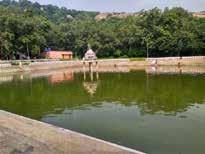
அ�ணகிரிநாதரால தி�பபகழ பாடபெபறற தலம இ�. மைலக ேகாவிலில ெகா� மரததிற� எதிேர விநாயகர இ�ககிறார. �ன மணடபததில நவவரரகள, நமபிராஜன இ�ககினறனர. இஙகி�ந� சற� ��ரததி�ளள வனததிற�ள வளளி பறைவகள விரட�ய மணடபம, நரா�ய �ைன, மஞசள ேதயதத மணடபம, ��கன நர ப�கிய �மரி தரததம என�ம �ரிய ஒளி படாத தரததம ஆகியைவ உளளன. யாைனயாக வந� வளளிைய பய��ததிய விநாயகர, மைல வ�வில இ�ககிறார. இைத யாைனக�ன� எனறைழககிறாரகள. இநத ேகாவிலில அைமந�ளள �ளததிற� சரவண ெபாயைக என� ெபயர. �ளததிற� அ�ேக வளளியின ேகாவில ஒன�ம அைமந�ளள�. �ளதைத அ�த� வ�ம ப�கட�களில ஏறிததான ��கைன வழிபட ��யம. ப�கட�களின பாைதயில இரண� மணடபஙக�ம அைமந�ளள�. அதில எட� கால மணடபதைத தவிர மறறைவகள சில ஆண�க�க� �னப தான ப�பபிககபபடடன. அநத எட� கால மணடபம மட�ம மிகவம சிறபப வாயநததாகக க�தபப�கிற�. வளளிமைலக ேகாவிைல ப�பபிக�ம பணிகள நடநத ேபா� எட� கால மணடபப ப�தியில உளள ஒ� கலைல அகற�ம ேபா� அஙகி�ந� வாசைன நிரமபிய பைக வநததாகவம, அதற�ள சிததரகள தியான நிைலயில இ�நதைதப பாரதததாகவம �றபப�கிற�. அதனால அவவிடததில மட�ம எநதவித மாறற�ம ெசயயாமல அநத கலைல அபப�ேய �� விடடனர என�ம தகவலகள ெதரிவிககினறன. தறேபா�ம அபப�தியில சிததரகள தவம பரிந� வ�வதாகவம க�தபப�கிற�. அதனால தான அபப�தி எவவிதததி�ம மாறறியைமககப படவிலைல. ப�கைளக கடந� ேகாவி�க�ச ெசனறால அங� நம கணகைள வியபபில ஆழத�ம வைகயில ஒேர கலலினால �ைடந� ெசயயபபடட ேகாயில நமைம அதிசயிகக ைவககிற�. �ைழவாயிலில உளள ஒ� சனனதியில வளளி அமமன பாைறயில ெச�ககபபட�ளள�. அநத சிறபததிற�ம ஆைடகள அணிவிககபபட� தபாராதைனகள நைடெப�கினறன. அவைர வணஙகி விட� உளேள ெசல�ம ேபா� சாதாரண உயரம ெகாணடவரக�ம �னிந� தான ெசலல ேவண�ம. அவவளவ தாழவான �ைழ வாயிைல அ�த� ��கன கரபபகிரகம காடசி அளிககிற�. ேமேல பாரததால பாைற எஙேக நம� தைலயில வி�ந� வி�ேமா எனற அசசம உ�வாகிற�. பாைறகைளக �ைடந� அதற�ள ��கைன ைவத� வழிபட ேவண�ம எனற எணணம எபப� ேதானறியி�க�ம என� பிரமமிபபாக உளள�. எபப�ததான இநத ேகாவிைல உ�வாககியி�பபாரகள என� நாம பிரமமித� நிற�ம ேபா� ேகாவில க�வைறக�ள உளள ஒ� �ைளையக காணபித�, இ� சிததரகள ெசன� வந� ெகாண��நத இடம என�ம தறேபா�ம இதற�ள சிததரகள இ�பபதாகவம நமபபப�கிற� என� ��கிறார ேகாவில �சாரி. ேம�ம அபப�தியில அைமந�ளள ஒ� பாைறையப பாரததால யாைனயின உ�வம ெதரிகிற�. வளளிைய தன பால கவர ��க�க� உதவி ெசயய வநத விநாயகர ெப�மான தான அநத யாைனயின உ�வம ெகாணட பாைற என� நமபம பகதரகள அதைன கேணச கிரி என� பகதிேயா� வணங�கிறாரகள. A TO Z INDIA NOVEMBER 2022 PAGE 15 வளளிமைல ஒ� சமணத தலம காடபா� அ�ேக, ேவ��ர மாவடடம: சிவ சஙகர

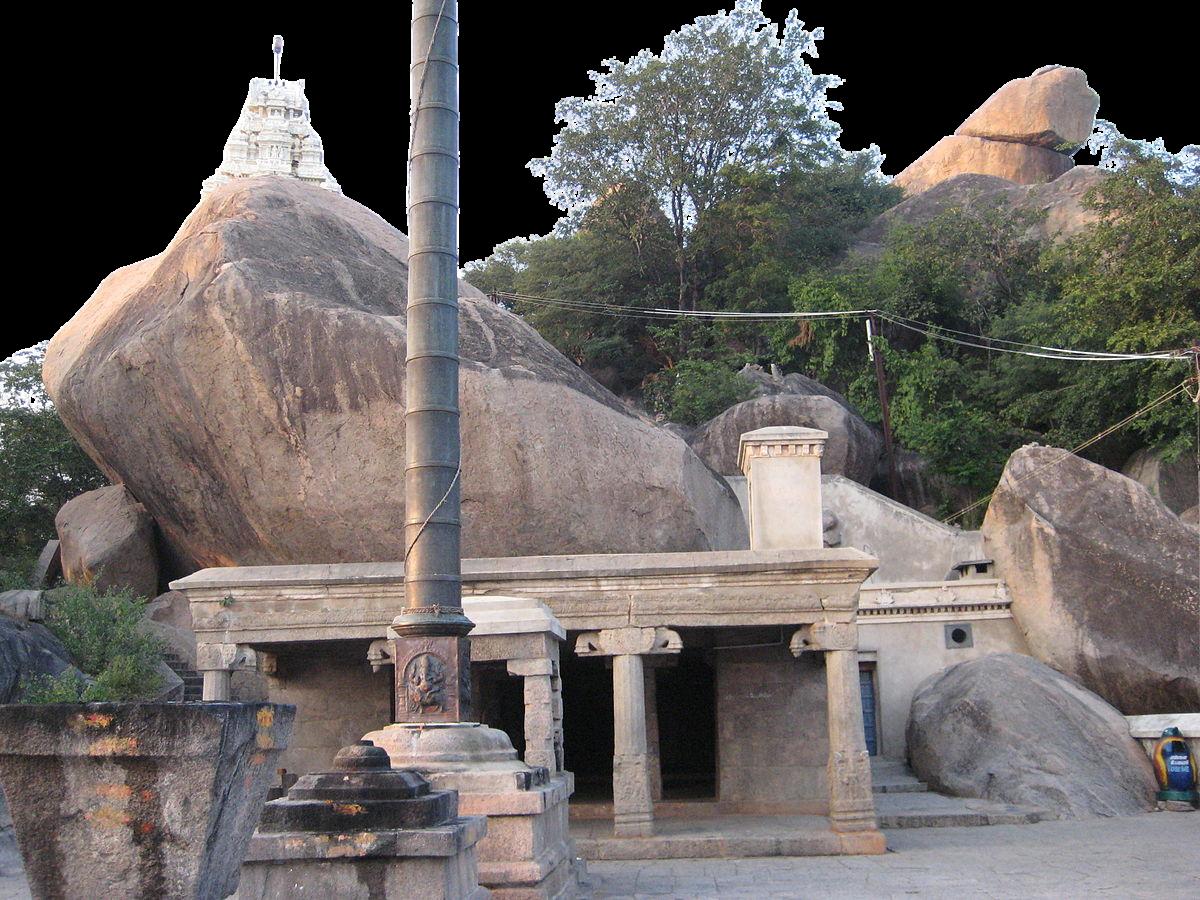

ேகாவிலில இ�ந� இரண� கி.ம. ெதாைலவில �வாமி சடசிதானநதர த அ நத ஆசிர�ம அைமந�ளள�. மைலயின உசசியில, தி�மால கிரஸவரா ேகாவி�ம உளள�. ஆசிரமததின ேமற�ப ப�தியில ஒ� �ைன உளள�. அதைன �ரியன காணாத �ைன என� அைழககினறனர. ஏெனனில அநத �ைனயின ம� �ரியனின கதிரகள வி�நதேத இலைலயாம. இதற� ஒ� பராணக கைதயம உளள�. அதாவ� ��கன வயதான ேதாறறததில வளளியிடம வந� தனக� பசிபபதாகவம, ேத�ம, திைன மாவம த�மப� ேகட�க ெகாணடார. அதன ப� வளளியம ெகா�ததார. அதைன சாபபி�ம ேபா� ��க�க� விககல எ�தததாகவம, அதறகாக வளளி ஓேடா�ச ெசன� இநத �ைனயில இ�ந� தான தணணர ெகாண� வந� ெகா�தததாகக �றபப�கிற�. இநத �ைனக� மிகவம மகத�வம உளளதாக பகதரகள நமபகினறனர. தி�மணமாகாத ெபணகள இநத �ைனயில இ�க�ம நைர எ�த� தைலயில தடவிக ெகாண� தனக� நலல கணவன வர ேவண�ம என� ேவண�க ெகாளவ� வழககம. இநத ேகாவில காைல ஆ� மணி �தல மாைல ஆ� மணி வைர மட�ேம திறநதி�க�ம. ேகாவி�க�ள நான� மணிகெகலலாம ெசன� விடடால அதற� பினனர இரண� கி.ம. ��ரம நடந� ெசன� ஆசிரமம, �ைன, தி�மால கிரஸவரர ேகாவிலகைள தரிசனம ெசய� விட� தி�மப இய�ம. ேகாவிலின நைட சாரததபபடடா�ம, மறற ப�திக�க�ச ெசன� தி�மப தனி வழி உளள�. ெசனைனயில இ�ந� வளளிமைலக�ச ெசலல இரணடைர மணி ேநரம ஆ�ம. ெசனைனயில இ�ந� ேவ��ர அலல� ஆரணி ஆறகா� ெசல�ம ேப�ந�கள பல வளளிமைலயில நின� ெசல�ம. எனேவ இைறததனைம வாயநத இததலததிற� ெசன� வளளி மைலயின அறபததைத கண� வா�ஙகள. வளளி, ெதயவயாைன சேமதராய வறறி�க�ம ��கனின அ�ைளப ெபற� வா�ஙகள. சிவ சஙகர A TO Z INDIA NOVEMBER 2022 PAGE 16 வளளிமைல ஒ� சமணத தலம காடபா� அ�ேக, ேவ��ர மாவடடம:








Sri Ganesh Glass & Plywoods Entire range of Plywoods, Glasses, Doors & all branded laminates. #2/1, Kambar Salai, Mugappair West, Chennai - 600 037. Mobile: 9380337886, 9566118008 e.mail: sriganeshglassandplywoods2014@gmail.com Ph: 044 26244992.
Odia crafts:

Osakothi murals in terracotta
Vaibhav
Osakothi murals in terracotta is a perfect jugalbandi among Odia crafts. Depicting scenes from the Ramayana, the Mahabharata, the stories of Jagannath and local lores these folk illustrated pots and jars are used in festivals and rituals in Ganjam and Puri regions.

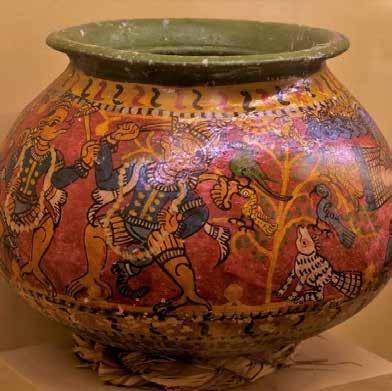
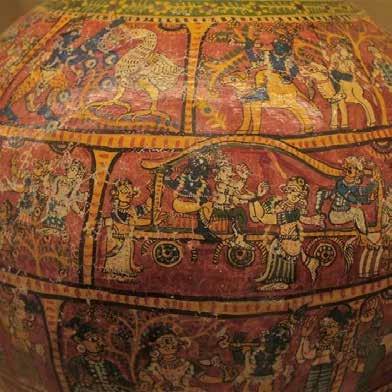
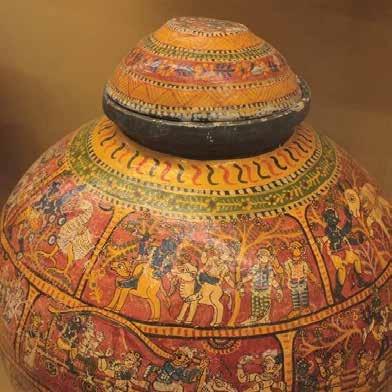
However the tradition is almost extinct now and thanks to the efforts of Kalabhoomi these have become accessible to all of us to appreciate this timeless Odia Craft.

A TO Z INDIA NOVEMBER 2022 PAGE 18
Odia crafts:

Osakothi murals in terracotta
Vaibhav
Osakothhi, a living tradition of mural paintings and performances of music, singing, dance and trance is unique to South Odisha, particularly the erstwhile Ganjam district. A few years ago I had an exciting trip to South Odisha. I had accompanied my artist friend to his village Ghatakuri in Ganjam district. Ghatakuri, a small village is located at the outskirt of Aska town, famous for its Sugar factory. By the time we reached in his village it was a bit earlier than the lunch time. My friend got engaged in exchanging family topics with his relatives, and I, falling short of what to do, went out for a stroll in the village to kill my time. While doing so; on the bending of the road at a corner of the village, I came across the drawings of colourful figures being drawn on a wide mud wall of a house. The drawings were of very raw quality and the use of colour was crude. However, the overall look of wall painting had a magnetic pull inherent in it. It was characteristically a rural mural painting.
The figures were of religious nature; like the Kali, Durga, Mangala, Shiva and Parvati etc., and were drawn on separate well-defined sections amidst figures of people, animals and various familiar objects being used or associated with in our daily life. And a boat was being drawn at the base of the whole painting as if holding all of it. As I enquired what it was, my friend informed me that it was Osakothi, being worshiped upon a vow to fulfill a personal desire by someone involving village community. After my return, when I wanted to know more about it there was virtually nothing available on the internet. As I had gathered, the famous Painter, Art Historian and Litterateur Dr. Dinanath Pathy has co-authored the only book on the Osakothi painting tradition, titled ‘Murals of Goddesses and Gods’ with Dr. Eberhard Fischer which was published by Indira Gandhi National Centre for the Arts (IGNCA), New Delhi and Museum Rietberg, Zurich.
What is Osakothi?

As I got to know from Dr. Dinanath Pathy, Osakothi is an alternative worshiping of Devi by the rural agricultural community, and being held for five, seven, fourteen or twenty-one days depending on the financial capacity of the devotee during the month of Ashwina-Kartika in rural Ganjam. Osakothi tradition is considered as a fertility festival as people those who keep the vow to orga nize it, they normally had it in their mind to be blessed with offspring. Besides, since the worshipping time coincides with the new cultivation season, 21 types of seeds are put on soil on a ‘Kula’ or bamboo separator those sprout during the time period.
It is very interesting to note that Osakothi is a participatory ritual by all the communities of the village. Although a particular household takes the initiative to organize it for the fulfillment of a desire, almost all the households across communities contribute for the celebration. Though the primary attraction of Osakothi celebration is mural paintings on the empty wall, singing, dancing and getting into trance are integral part of the ritual practice. The lines with twig brush are gaudy, yet unique. There is a lyrical grace in the rhythmic rendering of lines. This is known as Gara Banaka. Though Osakothi painting is linear, the colour application or Ranga Banak is an important aspect. The painters after delineating the basic structures of the figures take to laying colours. They are neither hesitant nor flattered while selecting the definite shades for different motifs. They choose bright colours like ultramarine, deep cadmium yellow, ver million, viridian green and black. When all the shades are applied, the canvas looks very full and delighting.
A TO Z INDIA NOVEMBER 2022 PAGE 19
Incredible India: mages of India hrough Chandra
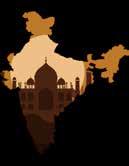


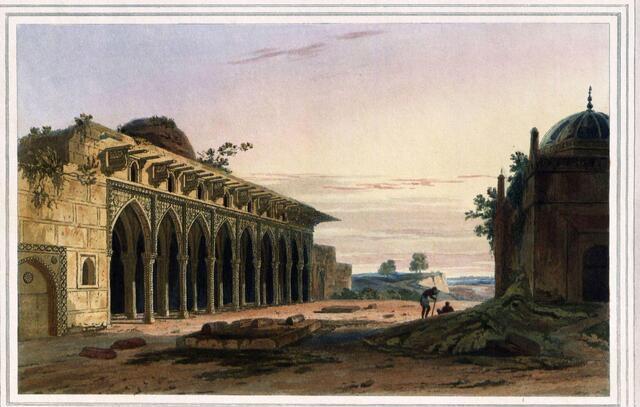

A TO Z INDIA NOVEMBER 2022 PAGE 21

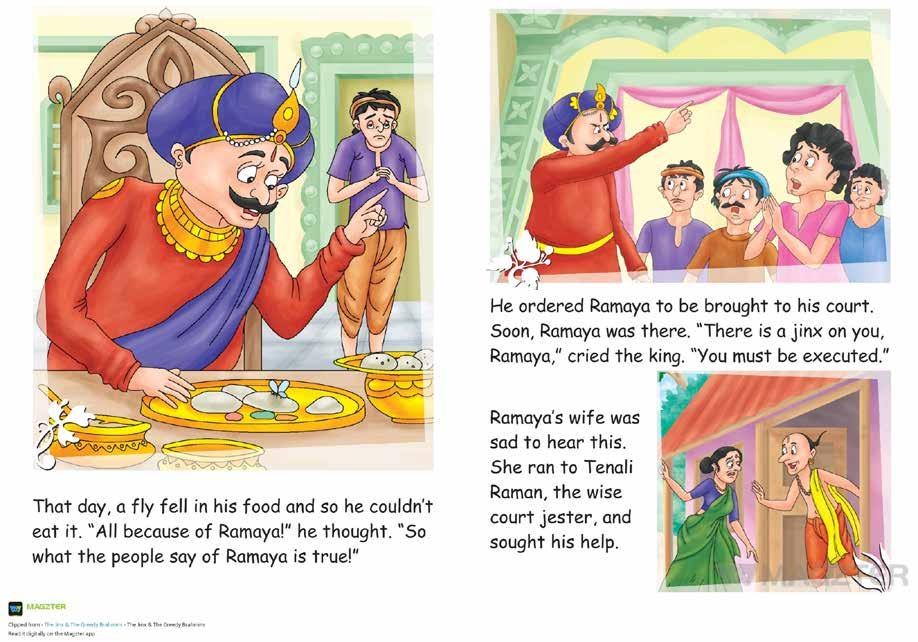
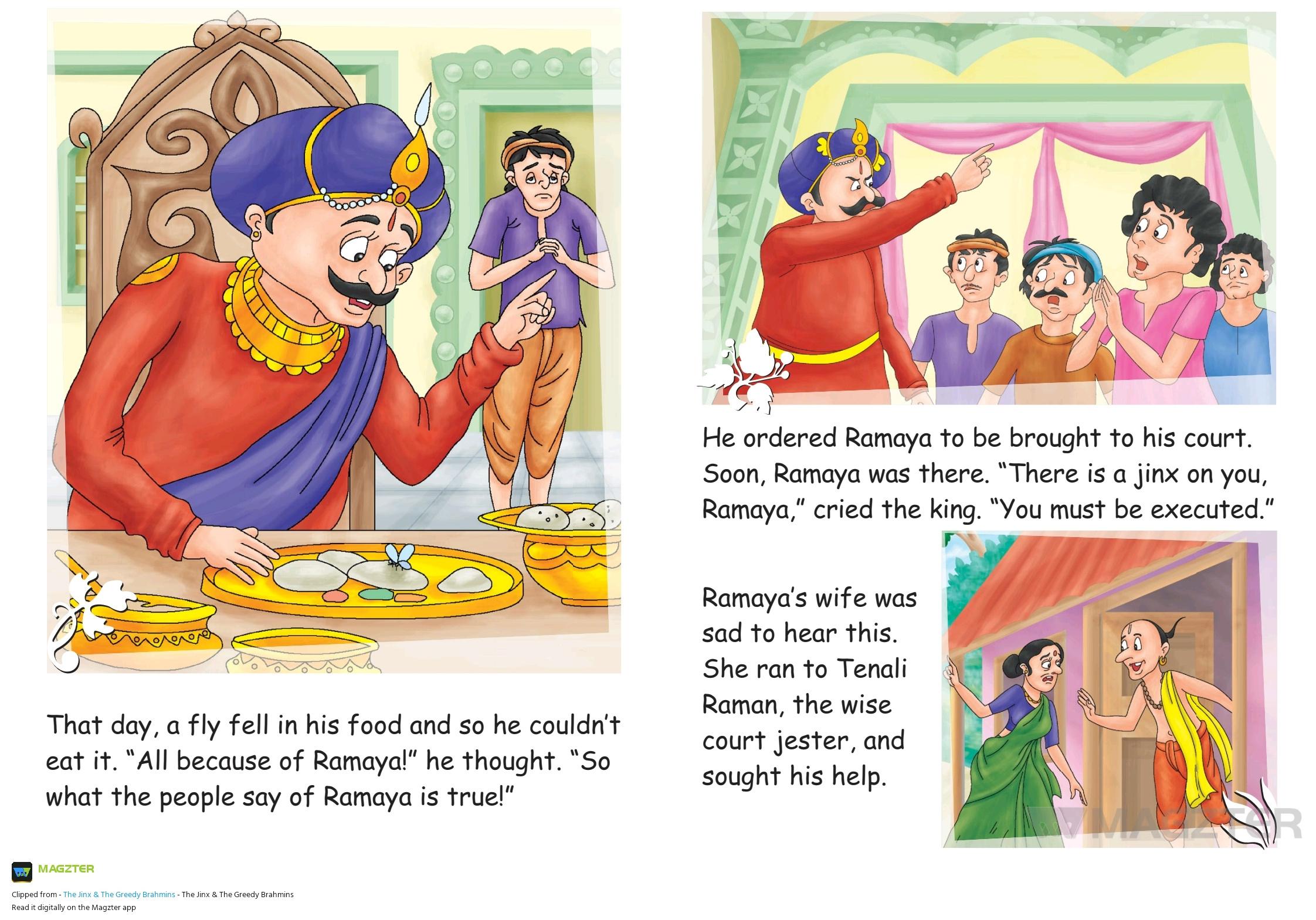
A TO Z INDIA NOVEMBER 2022 PAGE 22 இராைமயாைவ தன� நதிமனறததிற� அைழத� வர மனனர உததரவிடடார. உடேன இராைமயா அங� வநதார. "உனனிடம ஒ� �ரதிரஷடம இ�ககிற�, இராைமயா!", என� மனனர ேகாபபபடடார; "உனைன ��ககிலிட ேவண�ம" எனறார அவர. �ரஅதிஷடசாலி ெதனாலி இராமன கைதகள: ஆதிததியன அன� மனனர உணவில " ஈ " ஒன� வி�நததால, அவரால அைத உணண ��யவிலைல. "எலலாம இராைமயா தான காரணம!", என� அவர நிைனததார. "அபப�யானால, இராைமயாைவப பறறி மககள ெசாலவ� உணைமதான!" என� மனனர எணணினார. ஒ� காலததில, விஜயநகரததில இராைமயா எனற ஒ�வர வாழந� வநதார. மககள அவ�க� ஒ� �ரதிரஷடம இ�பபதாக நமபினர, ேம�ம அவ�டன ேப�வைதேயா அலல� அவர� �கதைதப பாரபபைதேயா தவிரததனர. மனனர இராைமயாவின ம� இரககபபட� உணைமையக கணடறிய வி�மபினார. அதனால, ஒ� நாள காைலயில இராைமயாைவ �தலில சநதிததார.

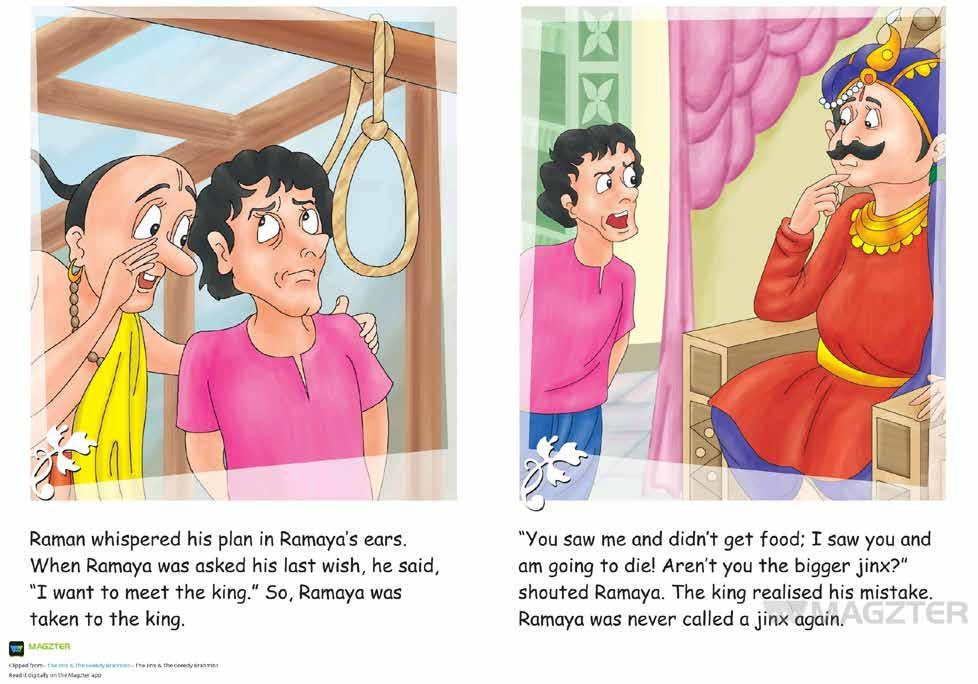
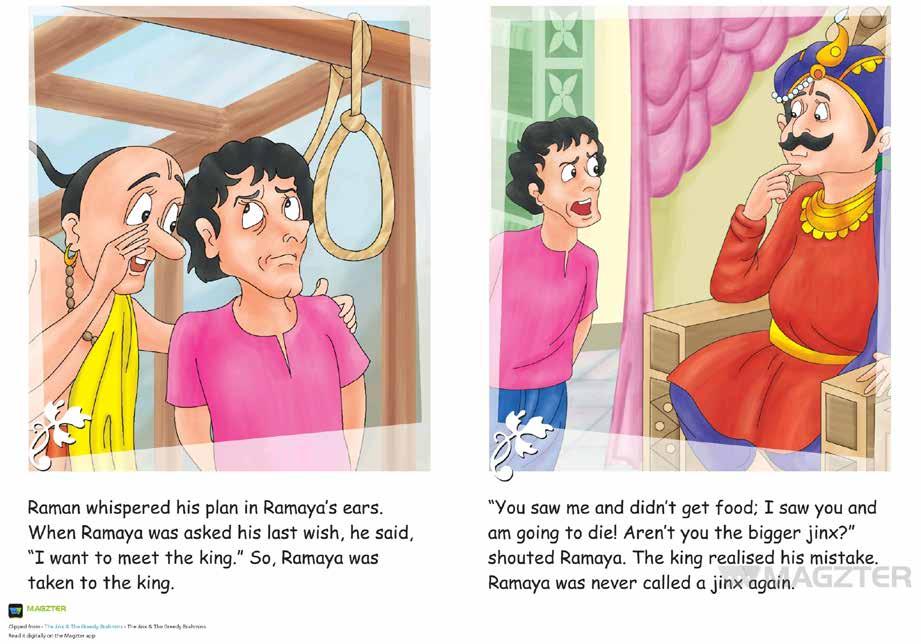
R 2022 PAGE 23 இராமன தன திடடதைத இராைமயாவின ஆைசையக ேகடடேபா�, "நான மன �றினார. எனேவ, இராைமயா அரசரிடம �ரஅதிஷடசாலி ெதனாலி இராமன கைதகள: இைதக ேகடட இராைமயாவின மைனவி வ�ததமைடநதாள. நதிமனறததின பததிசாலி அைமசசரான ெதனாலிராமனிடம ஓ�, அவர� உதவிைய நா�னாள. ஆதிததியன “நஙகள எனைனப பாரததரகள, உஙக�க� உணவ கிைடககவிலைல; நான உஙகைளப பாரதேதன, எனேவ நான இறககப ேபாகிேறன! நஙகளதான எனைனவிட ெபரிய �ரஅதிஷடசாலி அலலவா?" என� கததினார இராைமயா. அரசன தன தவைற உணரநதார. அன� �தல இராைமயாைவ எவ�ம �ரஅதிஷடசாலி என� அைழபபதிலைல.
Srinivasan


The beautiful Vigraha of Chennakeshava inside the Garbhagriha is carved out of Krishnashila (black stone) and stands on a Garuda Peetha (Pedestal). Chennakeshava holds Shanka and Chakra in his back hands, while in his front holds he holds Padma and Gadha.
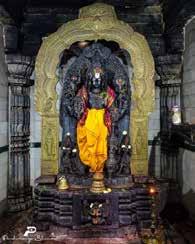
Sri Chennakeshava temple in Turuvekere is an Ekakuta temple built by Somanna Dannayaka a general under the reign of Hoysala King Narasimha III. During the time of Hoysalas, Turuvekere was a prominent Agrahara named Sarvajna Vijaya Narasimhapuri. The temple faces east and has Mukhamantapa, Navaranga Antarala and Garbhagriha. Like other Hoysala temples this temple too stands on a star shaped J agati (Platform). It is a fine example of Bhumija style of architecture.
The beautiful Vigraha of Chennakeshava inside the Garbhagriha is carved out of Krishnashila (black stone) and stands on a Garuda Peetha (Pedestal). Chennakeshava holds Shanka and Chakra in his back hands, while in his front holds he holds Padma and Gadha. There are miniature carvings of Vishnu's Dashavatars on the Prabhavali.
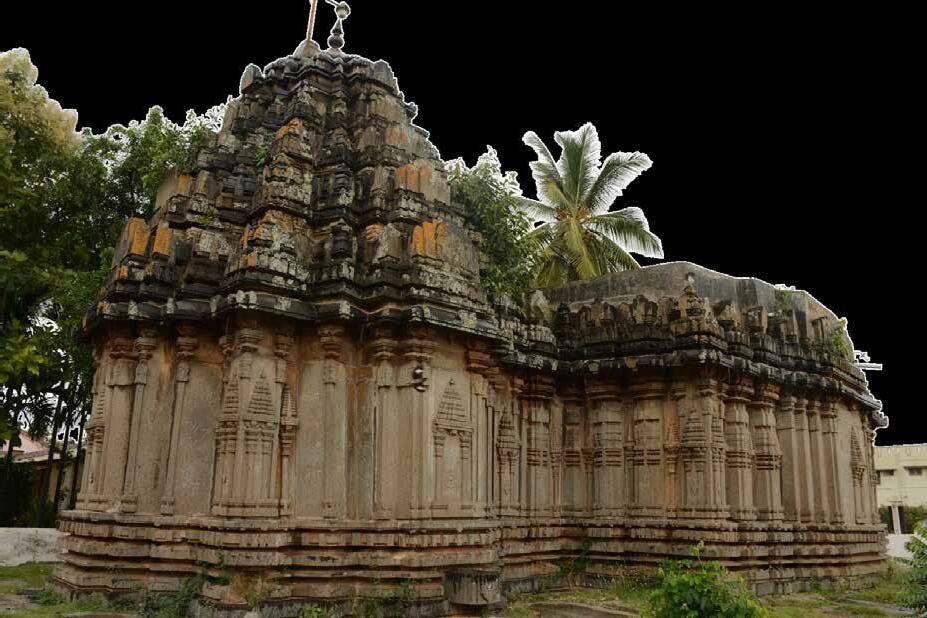 Turuvekere, Karnataka, India: Darshan of Chennakeshava
Turuvekere, Karnataka, India: Darshan of Chennakeshava
A TO Z INDIA NOVEMBER 2022 PAGE 24
Amararama - One of the five Pancharama Kshetras
Amaravathi town, Guntur district, Andhra Pradesh: Srinivasan
Amararama is one of the five Pancharama Kshetras that are sacred to the Hindu god Shiva. The temple is located in Amaravathi town of Guntur district in the Indian state of Andhra Pradesh. Amareswara Swamy or Amaralingeswara Swamy refers to Lord Shiva in this temple. The temple is situated on the southern bank of Krishna River. The consort of Lord Amareswara Swamy is Bala Chamundika. The Sivalin ga at this place is installed and established by Lord Indra.
The Deity:
The Sivalinga here is very tall that the Archakas mount a pedestal platform, and perform the daily rituals as well as Abhisheka. The top of the Linga has a red stain on it. It is said that Sivalinga was growing up in size and to stop its growth, a nail has been hit onto the top of the Sivalinga. When the nail dug into the Linga, blood started to ooze from the Sivalinga it seems. The stain can be see even today.
History:
Vasireddy Venkatadri Naidu, King of Chintapalli and later Dharanikota, was a great devotee of Amareswara. He expanded and renovated the temple. The popular legend has it that once during the course of putting down a rebellion in his land the King had to have recourse to a massacre of the Chenchus, whereupon he lost his mental peace, which he regained only when he came to Amaravati. He shifted his pla ce from Chintapalli to Amaravati in 1796, and devoted his entire life, time and revenues to building temples for Lord Siva. He renovated the Amareswaraswamy temple here, engaged nine learned Archakas for the daily Archana of the Lord, and provided them with all the needs of livelihood, including 12 acres (49,000 m2) of land to each. The temple as it stands owes much to him.
As per Legend, the demon king named Tarakasura defeated the Gods after being awarded a boon by Lord Shiva. Shiva vowed to kill the demons and hence the Gods came to reside here and since then the place came to be called Amaravati. Lord Shiva is worshipped as Amareswara with his consort Bala Chamundika, who is considered as the fourth of the 18 Goddesses. Sri Krishnadevaraya had visited this temple after the war of Kodapalli.
Architecture:
Amaravati temple has also a wealth of inscriptions on its walls like those of the Kota chiefs of Amaravati and of Sri Krishandevaraya, the great Vijayanagara emperor. On a pillar in the Mukhamantapa, the wife of Proli Nayudu, who was minister of Kota King Ketaraja, has left an inscription.
Festivals:
The main festivals in the temple are the Mahashivaratri, which comes in the Magha Bahula Dasami and the Navaratri and the Kalyana Utsavas. Amaravati is thus an important Kshetra situated at a particularly sacred spot of the holy river Krishna and is a consecrated place of worship, of importance to Hinduism.

A TO Z INDIA NOVEMBER 2022 PAGE 25
Amaravathi town, Guntur district, Andhra Pradesh:
Amararama - One of the five Pancharama Kshetras
Srinivasan
Amararama is one of the five Pancharama Kshetras that are sacred to the Hindu god Shiva. The temple is located in Amaravathi town of Guntur district in the Indian state of Andhra Pradesh. Amareswara Swamy or Amaralingeswara Swamy refers to Lord Shiva in this temple. The temple is situated on the southern bank of Krishna River. The consort of Lord Amareswara Swamy is Bala Chamundika. The Sivalin ga at this place is installed and established by Lord Indra.
Transport:
The temple is located at a distance of 40km from Guntur. State run APSRTC runs bus services from Guntur, Vijayawada and Mangalagiri to this temple.
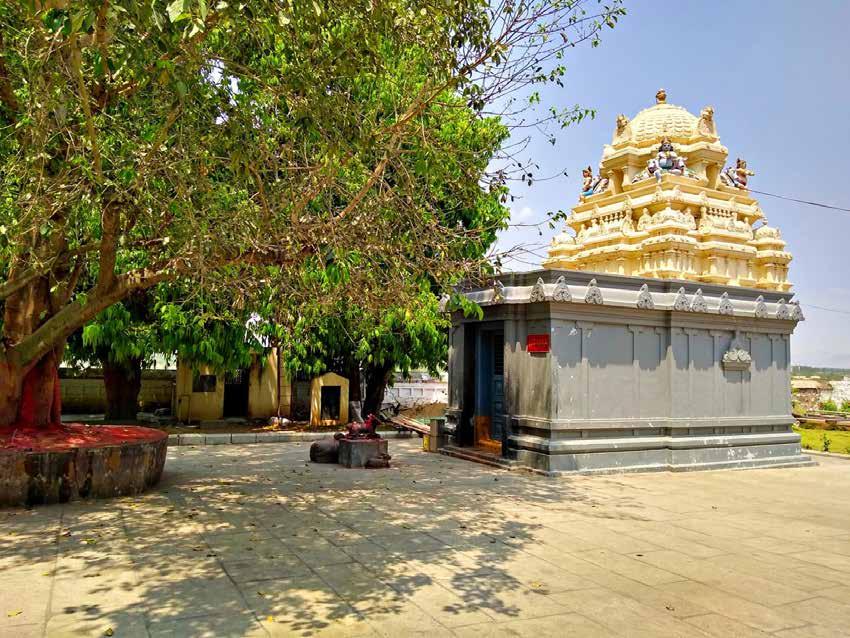
Renovation:
The Gopuram of the temple is renovated as it developed cracks in masonry due to the passage of Heavy equipment. It was rebuilt at a cost of Rs.1.56 crore. The former structure was renovated in 1796 by the local ruler Vasireddy Venkatadri Nayudu. During this renovation ancient artifacts dating back 1800 years are found in the Foundation pits.

A TO Z INDIA NOVEMBER 2022 PAGE 26
Wayanad district, Kerala:
Seetha Lava Kusha Temple
Dinesh

King Rama had banished his pregnant wife Sita, and sent her away to live in the forest, where she her was brought by Lakshmana and Hanuman and left in the then forest village of Pulpalli in the hermitage of Valmiki. The Sita idol here is known as Jadayattakavu Amma or Chedathinkavu. It is believed that Lava and Kusha were born here in Valmiki Ashrama and grew up in this place under the tutela ge of the sage Valmiki. The main shrine here is dedicated to Sita and flanked by shrines of her sons, Lava and Kusha (known locally as Murikannmar). known as Kerala Varma and was also known as Cotiote Rajah and Pychy Rajah, and who was a staunch devotee of Goddess Sita. It is also said that during the Pazhassi rebellion, Pazhassi Raja sought refuge in this temple precicnts of Pulpalli forest. He managed the temple for many years. The meetings and discussions with his army chieftains were held in the courtyard of this temple. Later the management of this temple came in the hands of the Kuppathode family and the renowned Nair family in Wayanad.
Did you know that the Seetha Lava Kusha Temple in Pulpalli, north west of Sultan's Bathery in Wayanad district, Kerala is where during the epic days of Ramayana, Sita, wife of Rama lived with her two sons?
The Seetha Lava Kusha Temple in Pulpalli, a Grama Panchayath town now 25 km north west of Sultan's Bathery town in Wayanad, Kerala, is unique and probably the only one of its kind, entirely dedicated to Sita and her sons Lava and Kusha of the epic Ramayana vintage. King Rama had banished his pregnant wife Sita, and sent her away to live in the forest, where she her was brought by Lakshmana and Hanuman and left in the then forest village of Pulpalli in the hermitage of Valmiki. A large number of termite mounds (Valmeekam) are seen at different spots in this village; this is associated with the sage Valmiki (huge anthills formed around Agni Sharma who was perfroming penance for a long time and this earned him the name of Valmiki), who authored the epic Ramayana. The main shrine here is dedicated to Sita and flank ed by shrines of her sons, Lava and Kusha (known locally as Murikannmar).
Local legends connect Pulpalli region with many important episodes from the Ramayana. It was built by Pazhassi Raja (January 1753 November 1805), of the Kottayam royal clan, who was
The Sita idol here is known as Jadayattakavu Amma or Chedathinkavu. It is believed that Lava and Kusha were born here in Valmiki Ashrama and grew up in this place under the tutelage of the sage Valmiki. It is also believed that even the name Pulpally is connected to the bed of Darba grass (Kusha grass) on which Kusha is believed to have played as a child. This sacred place was also known as Sisumala.
A story connected with this temple, is dated to 18th century when Tipu Sultan of Mysore Kingdom invaded Wayanad and established his Sultan Bathery and the fort near here. It is said that Tippu Sultan wanted to demolish this temple but the act failed as Sita with her supreme power, created darkness in noon around the temple which made Tippu Sultan's army to
A TO Z INDIA NOVEMBER 2022 PAGE 27
Wayanad district, Kerala: Seetha Lava Kusha Temple
Dinesh

King Rama had banished his pregnant wife Sita, and sent her away to live in the forest, where she her was brought by Lakshmana and Hanuman and left in the then forest village of Pulpalli in the hermita ge of Valmiki. The Sita idol here is known as Jadayattakavu Amma or Chedathinkavu. It is believed that Lava and Kusha were born here in Valmiki Ashrama and grew up in this place under the tutelage of the sage Valmiki. The main shrine here is dedicated to Sita and flanked by shrines of her sons, Lava and Kusha (known locally as Murikannmar).
retreat without demolishing the temple. Another interesting aspect around the temple environs is that there are no leaches here unlike the rest of the Wayanad forest area. According to the legend, Goddess Sita cursed the leeches that bit Lava and Kusha and banished them from Pulpally.
The temple's annual festival is celebrated in the first week of January, also considered to be the regional festival, which is attended by a large number of people belonging to different castes and creed. This temple is 50 km away from Kalpetta, 25 km from Sultan Bathery, and 41 km from Mananthavadi in Kerala.
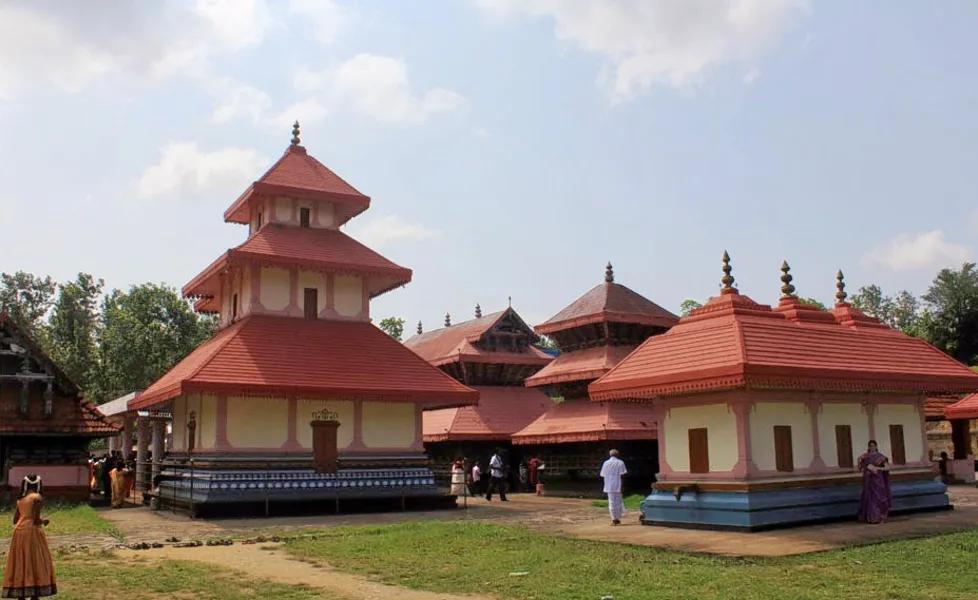
A TO Z INDIA NOVEMBER 2022 PAGE 28
Pune
Rajgad fort
of Maharashtra, India:
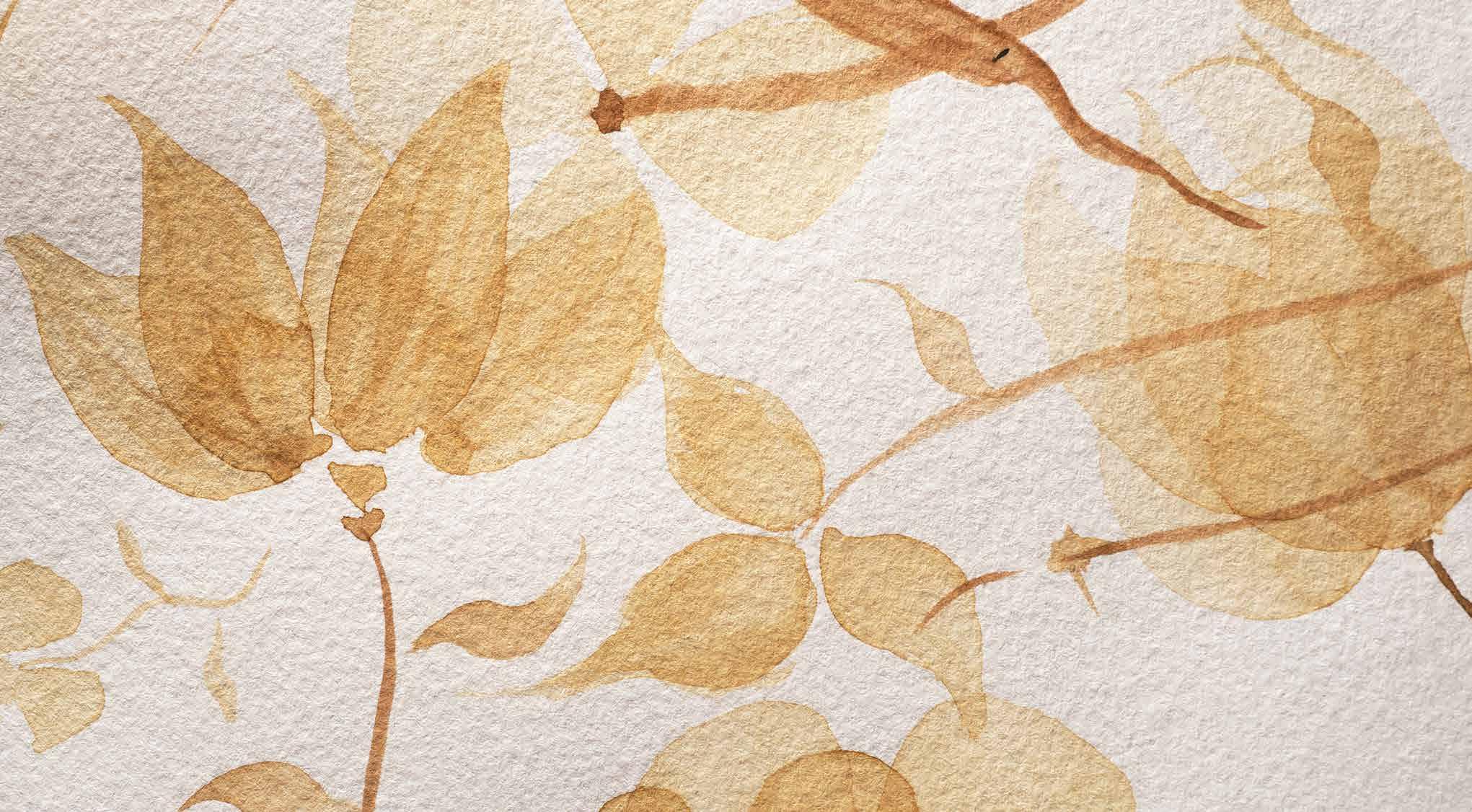
Srinivasan
Rajgad fort, meaning the ‘Ruling fort’, is a trekker’s paradise. It is one of the most invincible forts of medieval Maharashtra and located on a triangular plateau of hills. One angle is Suvela Machi, located on the fort’s eastern part.

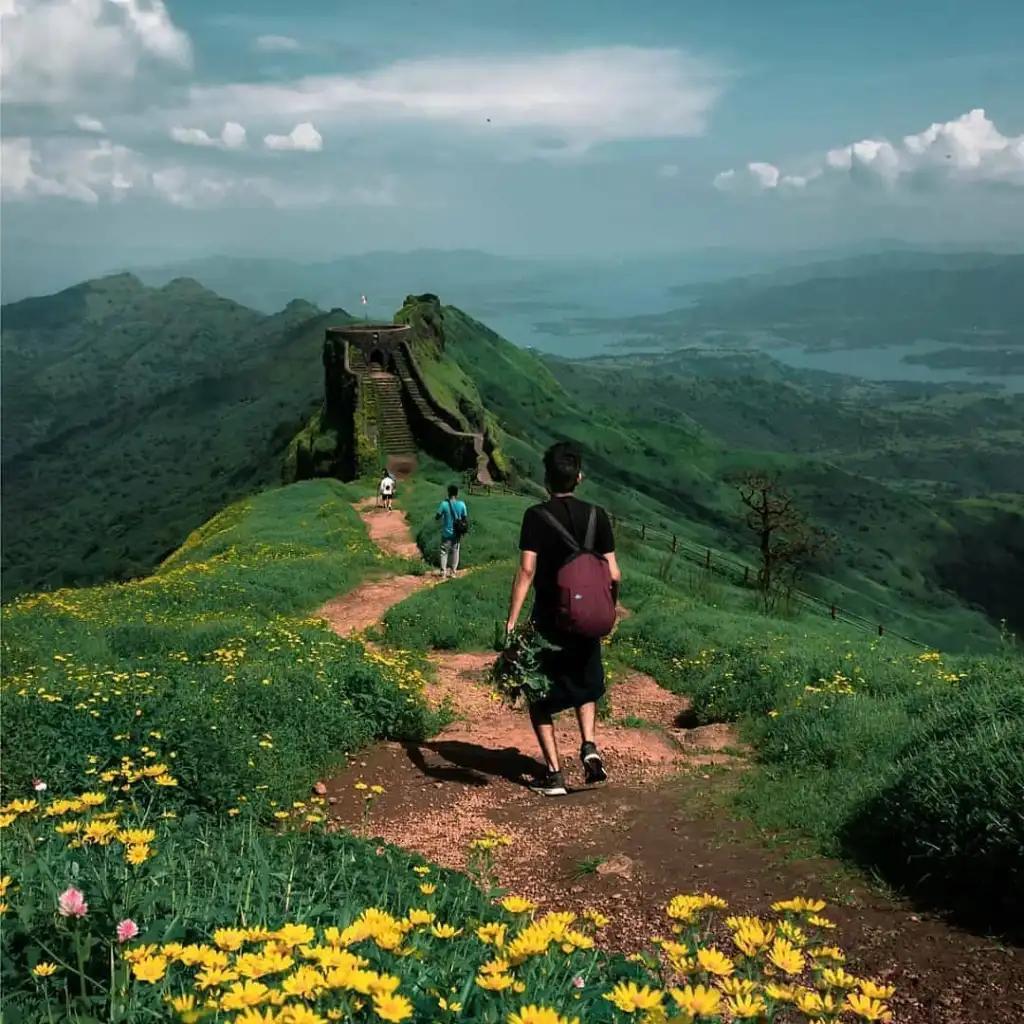
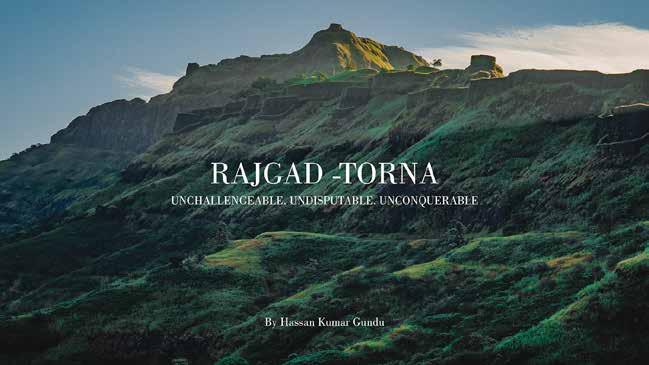
60 km from Pune. This fort was built on a hill called Murumbadevi Dongar (Mountain of the Goddess Murumba). This fort was the capital of Maratha Empire for over 20 years under the rule of Chhatrapati Shivaji Maharaj. The Padmavati temple and Balle Killa are among the fort’s attractions.

A TO Z INDIA NOVEMBER 2022 PAGE 29
district
Rajgad fort
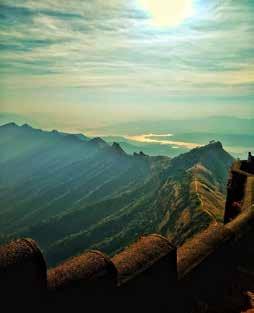

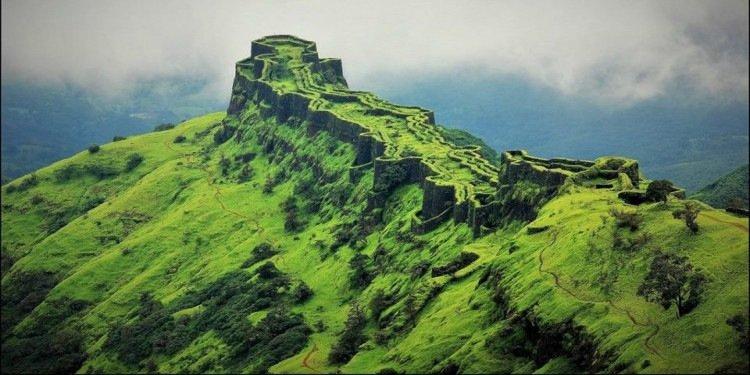

It is nearly 450 yrs old. It is situated at around 60Km from the city of Pune. This fort was the capital of Maratha Empire for nearly 25yrs under the leadership of Chhatrapathi Shivaji Maharaj. The diameter of the base of the fort was about 40 km which made it difficult to lay siege on it, which added to its strategic value.
The fort's ruins consist of palaces, water cisterns, and caves. This fort was built on a hill called Murumbadevi Dongar (Mountain of the Goddess Murumba). Rajgad boasts of the highest number of days stayed by Chhatrapati Shivaji Maharaj on any fort. It is visited often by selective tourists and trekkers from in and around Maharashtra throughout the year and especially during the monsoons for its beauty.
Srinivasan
A TO Z INDIA NOVEMBER 2022 PAGE 30
Pune district of Maharashtra, India:
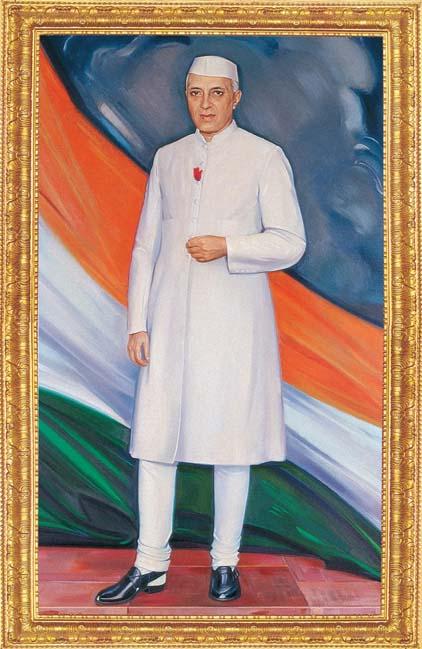
A TO Z INDIA NOVEMBER 2022 PAGE 31
Children's Day in India (Pt. Shri Jawaharlal Nehru Jayanti)
“Culture is the widening of the mind and of the spirit” Jawaharlal Nehru
Monday, 14th November 2022


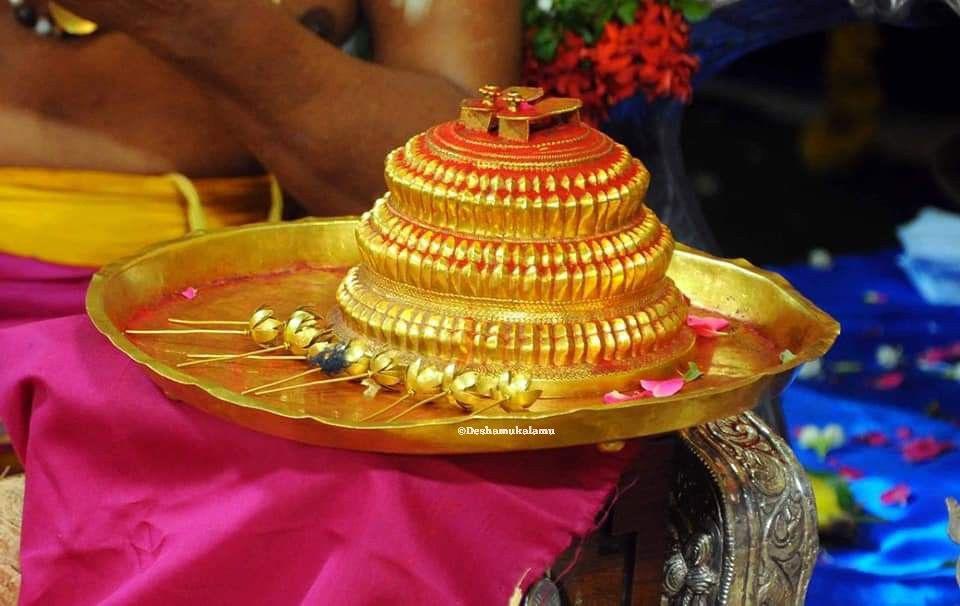
ைவணவக ேகாயிலகளில ெப�மாைள ேசவிதத பிற�, பகதரக�க� ஆசிரவாதம ெசயய சடாரி எனற ம�டதைதத தைலயில ைவபபாரகள. சற� கவனித�ப பாரததால, அதன ேமல இரண� பாதச�வ�கள ெபாறிககபபட��க�ம. அெதனன தி���யின ேமல தி�வ�? ெப�மாைள ேசவிககிேறாம, �ளசி தரததம ஆனப பிற�, சடாரி ைவத�க ெகாளகிேறாம. அதன பினனணிைய பறறி அறிந�க ெகாளேவாம. ஒ��ைற, தான வாசம ெசயயம ைவ�ணடததில ஸரமந நாராயணன சயன நிைலக�ச ெசலல ஆயததமா�ம சமயம, தன�ைடய சங�, சககரம, தி��� ஆகியவறைற எ�த�, ஆதிேசஷன ம� ைவததார. தி�ெரன தனைன தரிசிகக வநத �னிவரகள �ரல ேகட�, பாமபப ப�கைகயில இ�ந� அவசரமாக எ�ந� ெசனற பரநதாமன, வழககத�க� மாறாக தன பா�ைககைள ஆதிேசஷன அ�கில சயன அைறக�ளேளேய விட�விடடார. ஆதிேசஷன ம� ஒயயாரமாக சங�ம, சககர�ம, கிரட�ம அமரநதி�நதன. ஆனால, அ�கிேலேய பா�ைகக�ம இ�நத� அவற�க�ப பி�ககவிலைல. சங�ம சககர�ம பா�ைககைளப பாரத�, "கவரவததால உயரநத நாஙகள இ�க�ம இடததில, ��சியிேல பர�ம பா�ைககளான நஙகள எபப� இ�ககலாம?" என� ேகடடன. "இ� எஙகள தவறிலைல. பகவானதான எஙகைள இஙேக விட�ச ெசனறார" எனறன பா�ைககள. பகவான தி���ைய அலஙகரிபபவன நான. கரஙகைள அலஙகரிபபவரகள சங�ம, சககர�ம! ஆதிேசஷன ம� அம�ம அ�கைத எஙக�க� மட�ேம A TO Z INDIA NOVEMBER 2022 PAGE 32 இநதிரா ெப�மாள ேகாவிலகளில சடாரி ைவபபதின தத�வம சடாரியின மகத�வம:


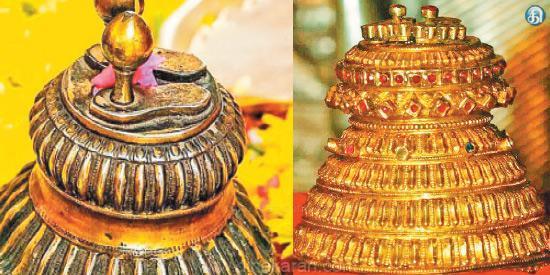
உண�. பாதஙகைள அலஙகரிக�ம ேகவலமான பா�ைககளான உஙக�க� இஙேக இ�கக அ�கைத இலைல. உஙகள வழககமான இடத�க�ப ேபாயவி�ஙகள என�, ேகாபத�டன ெசானன� கிரடம. இ�வைர ெபா�ைமயாக இ�நத பா�ைககள, கிரடம இபப�ச ெசானன�ம ேகாபத�டன, "நாஙகள பாதஙகைள அலஙகரிபபவரகளதான. ஆனால, ேகவலமானவரகள அலல. மகரிஷிக�ம ேதவரக�ம பகவானின பாதஙகளில தஙகளின தி���கள ப�மப� நமஸகரித� வணங�கிறாரகேள தவிர, உஙகைளத த�வித தரிசிபபதிலைல. பனிதமான தி�வ�கைள அலஙகரிக�ம நாஙக�ம பனிதமானவரகளதான" என� பதி�க� வாதிடடன. கிரடத�டன, சங�ம, சககர�ம ேசரந� ெகாணடதால, தனித� நினற பா�ைககளால, ஏளனப ேபசைசத தாஙகிகெகாளள ��யாமல, பகவான எபேபா� வ�வார. அவரிடம �ைறயிடலாம என� கலஙகி காத� நினறன. பகவான வநதார. அவர பாதததில கணணர சிநதி, பா�ைககள �ைறயிடடன. "இஙேக நடநதைத நான அறிேவன. என சனனதியில ஏறறத தாழவகள கிைடயா� எனபைத உணராமல, கிரட�ம சங�ம சககர�ம கரவம ெகாண�, பனிதமான உஙகைளத ��றறியதறகான பாவ பலைன அ�பவிகக ேவண� வ�ம. தரமதைத நிைலநாடட, ஸரராமாவதாரம நிக�மேபா�, சககர�ம சங�ம என சேகாதரரகளாக பரதன, சத�கனன எனற ெபயரகளில அவதரிபபாரகள. அநத அவதாரததில நான அரச பதவிைய ஏற� சிமமாசனததில அமர ��யாத ஒ� �ழநிைல ஏறப�ம. A TO Z INDIA NOVEMBER 2022 PAGE 33 இநதிரா ெப�மாள ேகாவிலகளில சடாரி ைவபபதின தத�வம சடாரியின மகத�வம:


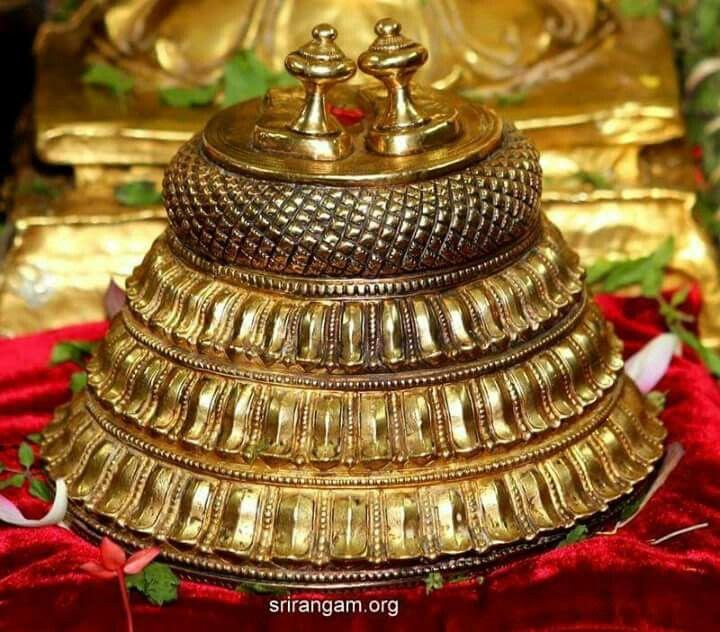
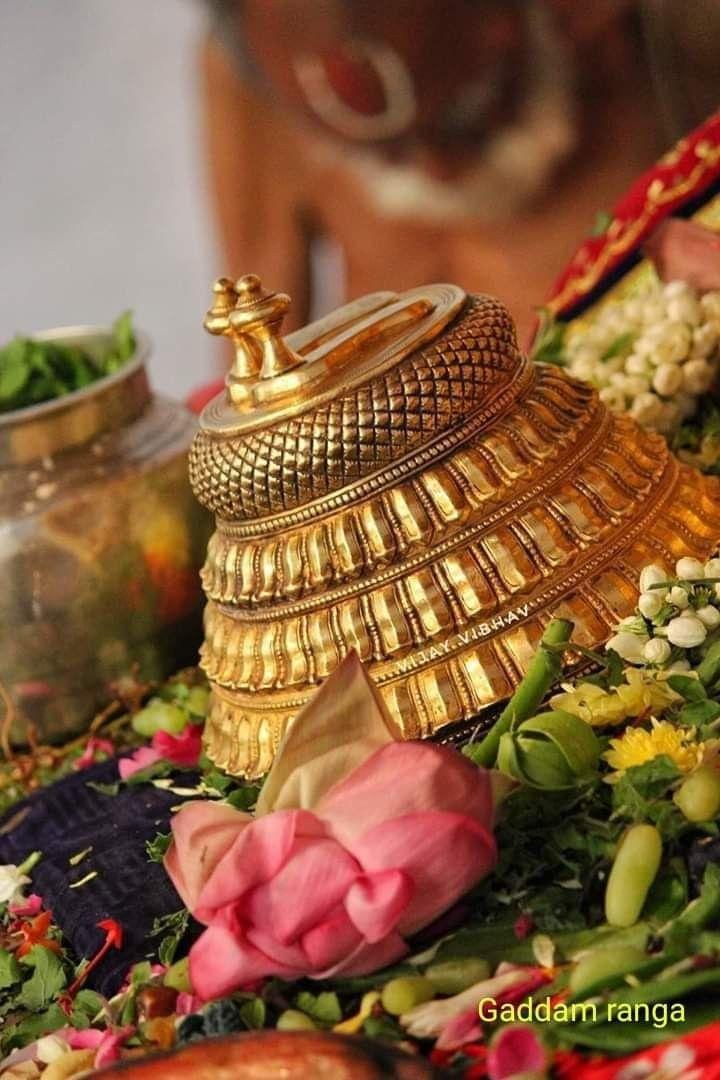
அபேபா� இநதத தி���ைய சிமமாசனததில ைவத� அதன ம� பா�ைககளான உஙகைள ைவத�, சங�ம சககர�ம 14 வ ப அ ப � எ ம ம ல ை , அ ன ப இநதிரா ெப�மாள ேகாவிலகளில சடாரி ைவபபதின தத�வம சடாரியின மகத�வம:


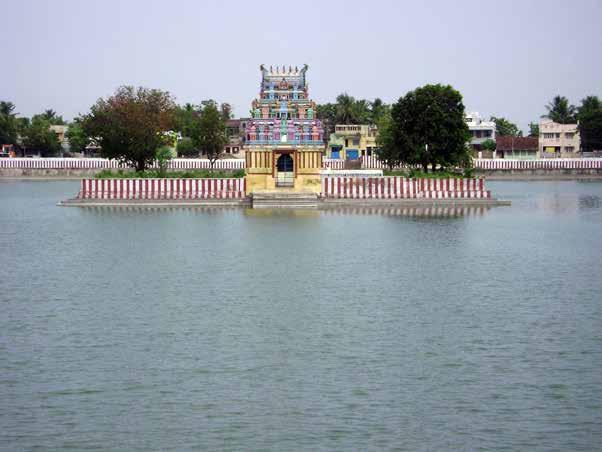
இநதிரா இநதியாவின ெபரிய ெதபபக�ளம ஹரிதரா நதி, மனனார��: A TO Z INDIA NOVEMBER 2022 PAGE 35 இநதியாவின ெபரிய ெதபபக�ளம மனனார��யில உளள ஹரிதரா நதி. ேகாபிலர, ேகாபபிரளயர எனற இரண� �னிவரக�க� பரநதாமன கணணனாக காடசி அளிததார என�ம, �ளததில கணணன ேகாபிைகய�டன ஜலககிரிைட ெசயத ேபா� அநத கனனிைகயரின உடலில �சிய மஞசள (ஹரிதரா) மற�ம ந�மணப �ச�பெபா�டகள இக�ளததின தரததததில ப�நதப�யால இக�ளம ஹரிதரா (மஞசள) எனற காரணபெபயரில அைழககபப�கிற�. "ஊரககாரஙக ெராமபத தபப பணணி இ�ககாஙக! ஹரிதரா நதியாேம நதி.......... சரியாச ெசானனால ஹரிதரா கடல� வச��கக�ம. ஹரிதரா ச�தரம �டப ெபா�ததமதான! 1158 அ� நள�ம, 837 அ� அகல�மா கிடக�. �ததிவர வதிகள!" இக�ளம காவிரியின மகள என�ம, ேகா� பணணிய தரததஙகள ஒன� ேசரநத� என�ம பராண வரலா� ��கினறன. ராஜேகாபால �வாமிக� தின�ம தி�மஞசன தரததம இக�ளததில இ�ந� தான எ�த�செசலகிறாரகள. பி�� �னிவர ேவண�ேகா�க� இணஙகி காவிரிைய ெபரிய �ளமாக ேதககி அதில ராஜேகாபாலன ஜலககிரிைட ெசயததாக �றபபட�ளள�. 'ேகாவில பாதி, �ளம பாதி' எனற ெசாலவைட, மனனார��க� சிறபப ேசரதத�. ேகாவிலின வடககி�ளள, ஹரிதரா நதி �ளம, 2 ஏககர பரபபளவ உைடய�. பாரபபதற� கடல ேபால காடசியளிக�ம. �ளத�க� ந�வில ேகாபரதேதா� ஒ� ேகாவில, ஸர ேவ�ேகாபால ஸவாமிககான� !
Move Ahead with Contentment and Faith
Only deep knowledge can bring celebration, and you need to bring that celebration to everyone. Be content and know that you are at the right place, doing the right thing, and remember that only the best will happen to you.
You must have this strong belief that everything will be taken care of. Challenges do come in life and every challenge makes you strong and makes you shine from within.
Only a diamond gets cut. When a diamond is cut, it shines more. Similarly, with gold, when it is put in fire, it shines more. The more you crush the sugarcane, the more juice comes out of it. Similarly, in our life, problems come, but know that they are very small. Life is much bigger, and this is not our only life. We have had many lives in the past, therefore we must have a broad vision.
The more content you are, I tell you, miracles will be abundant in your life. If you are not experiencing miracles, don’t worry, it will happen to you too. This is the beauty of this path; there is an abundance of everything. Be on the path and bring this fragrance to many more people.

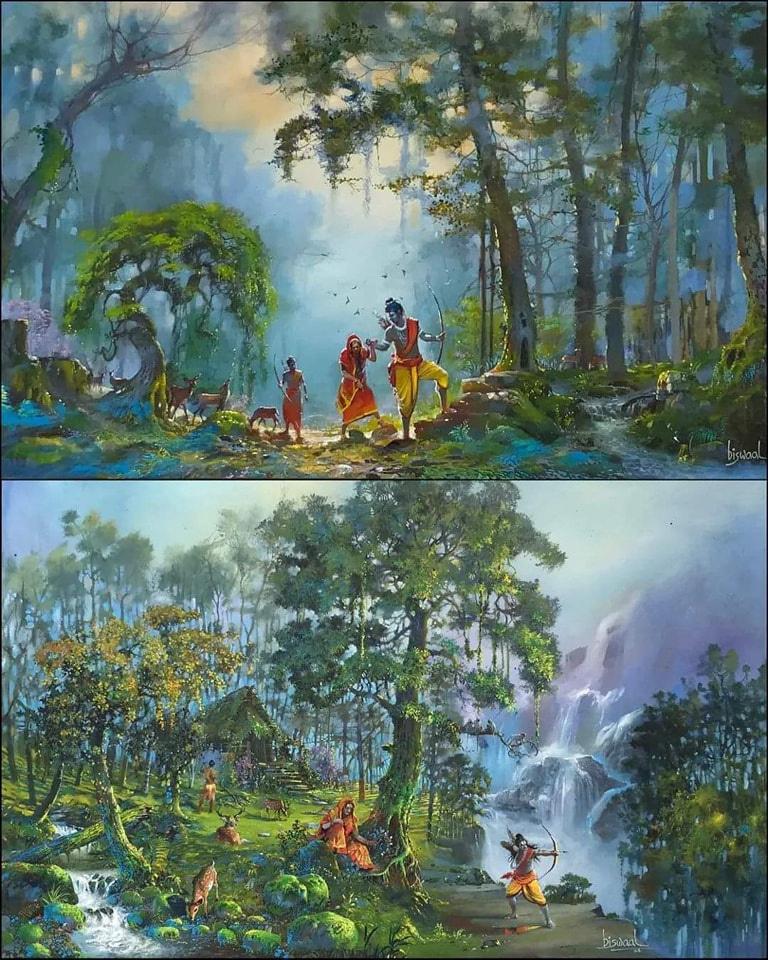

Quotes: A TO Z INDIA NOVEMBER 2022 PAGE 36

A TO Z INDIA NOVEMBER 2022 PAGE 37

Owned, Published & Printed by INDIRA SRIVATSA, Printed at SRI AATHI LAKSHMI GRAPHICS, 14/33, Sivan Koil Cross Street, Kodambakkam, Chennai - 600024 & Published from E 002, Premier Grihalakshmi Apartments, Elango Nagar South, Virugambakkam, Chennai 600092. EDITOR: INDIRA SRIVATSA A TO Z INDIA NOVEMBER 2022 PAGE 38
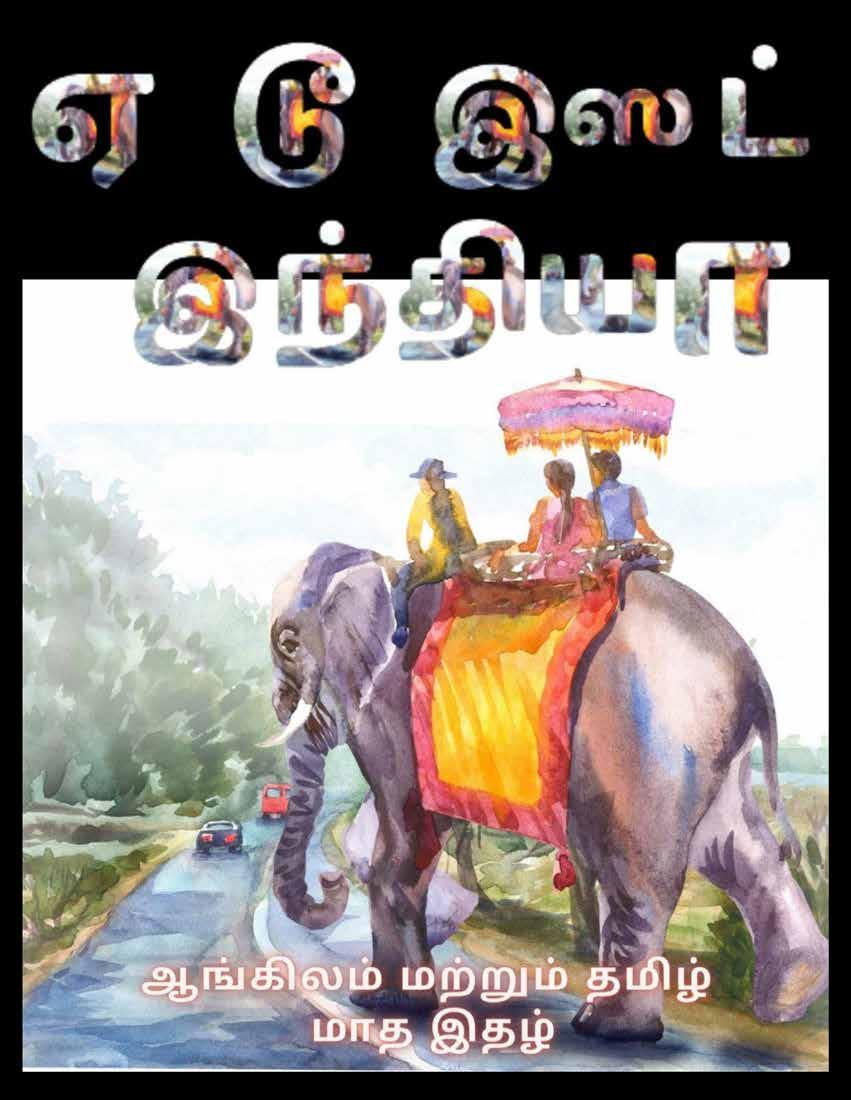
-> உஙக�ைடய பைடபபகைள அ பபேவண ய ம னனஞசல �கவரி: editor.indira@gmail.com A TO Z INDIA NOVEMBER 2022 PAGE 39
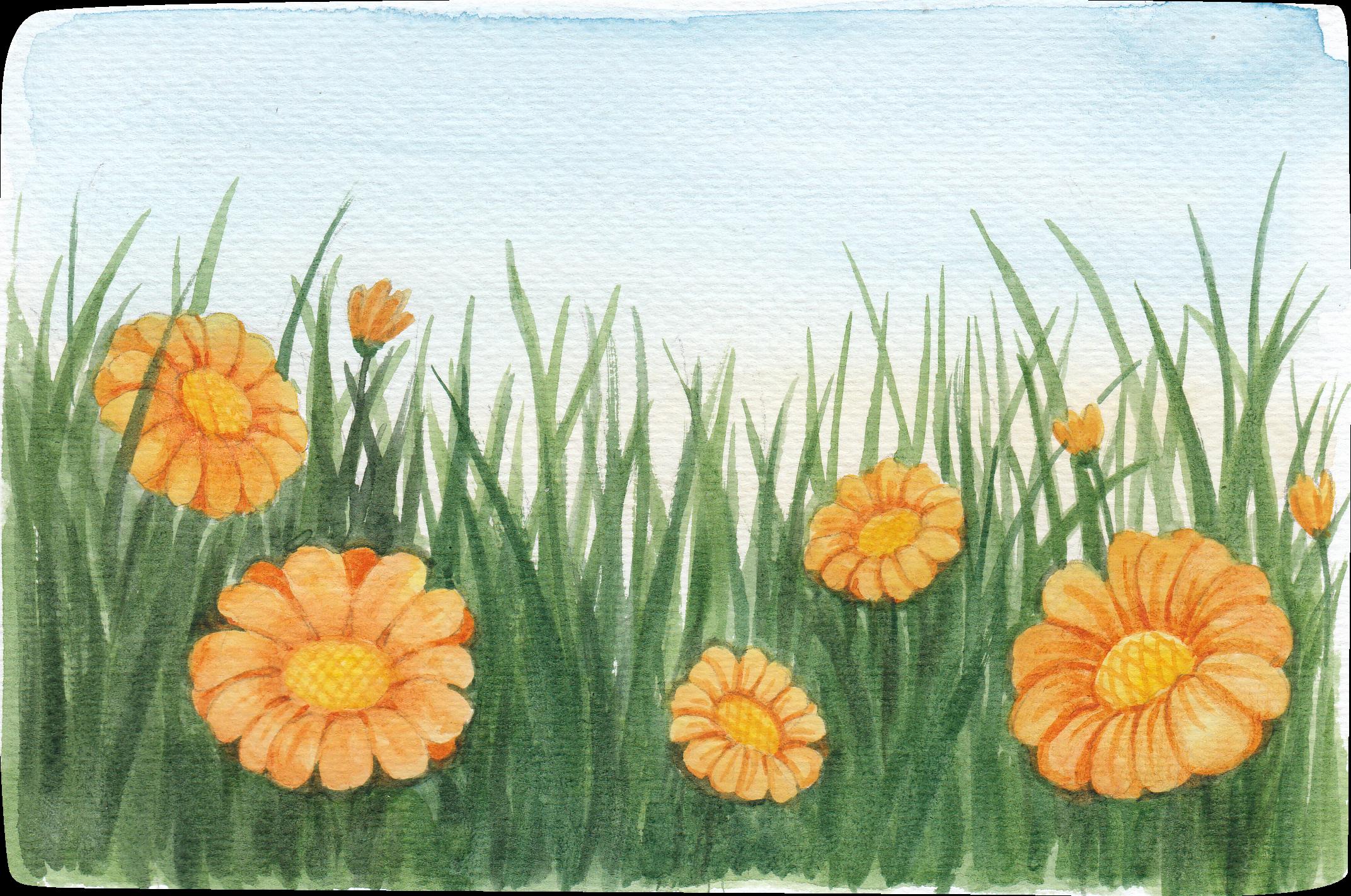
A TO Z INDIA NOVEMBER 2022 PAGE 40 A TO Z INDIA ENGLISH & TAMIL MONTHLY MAGAZINE PUBLISHED ON THE FIRST WEEK OF EVERY MONTH REG. WITH REGISTRAR OF NEWSPAPERS FOR INDIA UNDER NUMBER TNBIL/2017/75531 R. DIS NO. 757/2017 ROC NUMBER L 105291/2021



































 By Salil S New D
By Salil S New D







 Padmanabhan
||Om Sri Nambi Narayana Namaha||
Nambi Narayana temple
Mandya, Karnataka:
Padmanabhan
||Om Sri Nambi Narayana Namaha||
Nambi Narayana temple
Mandya, Karnataka:


























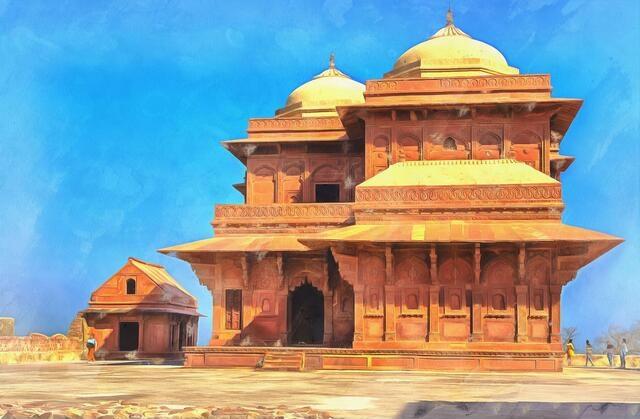
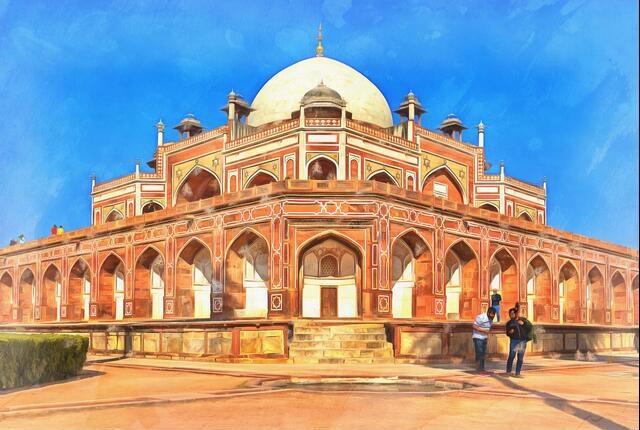











 Turuvekere, Karnataka, India: Darshan of Chennakeshava
Turuvekere, Karnataka, India: Darshan of Chennakeshava




























